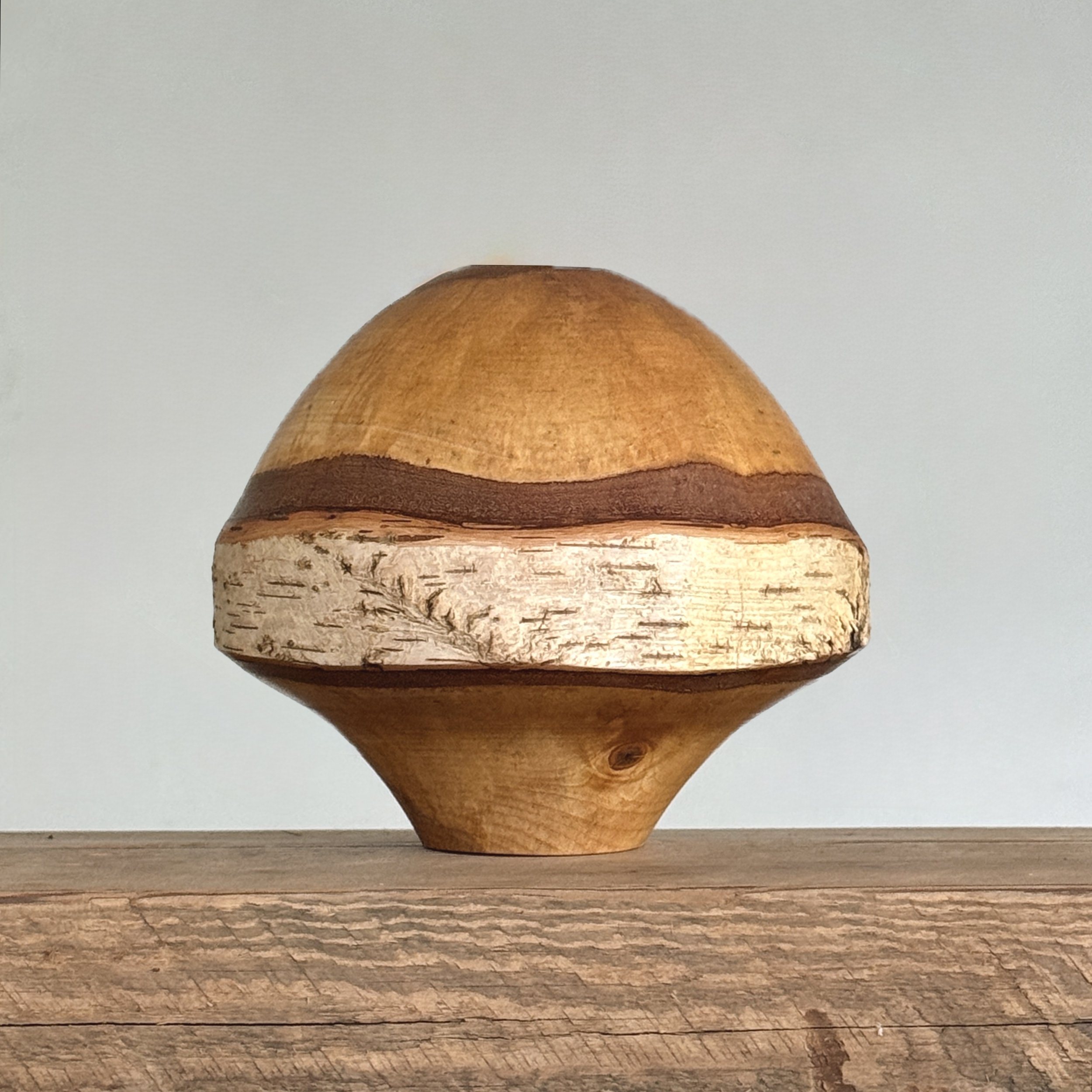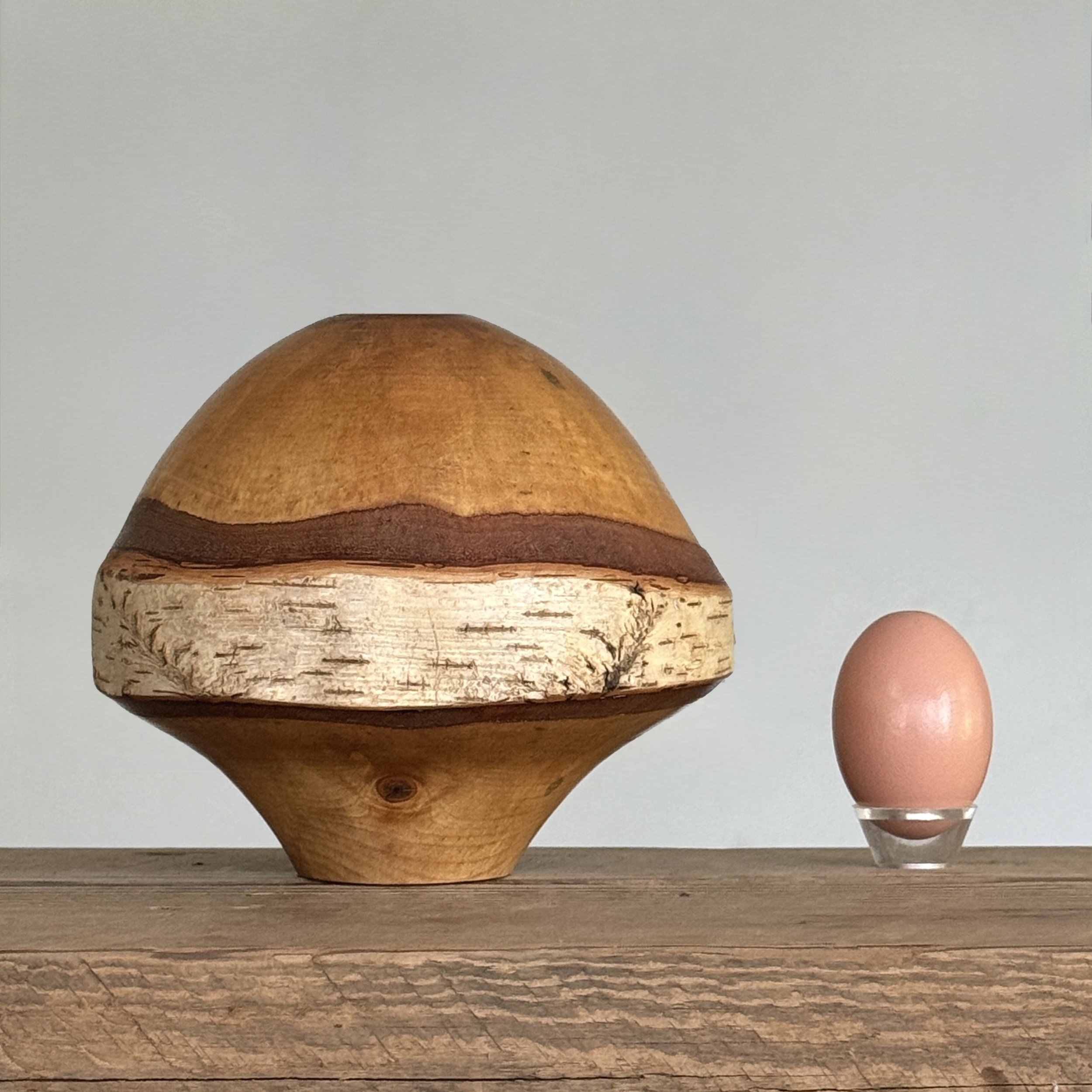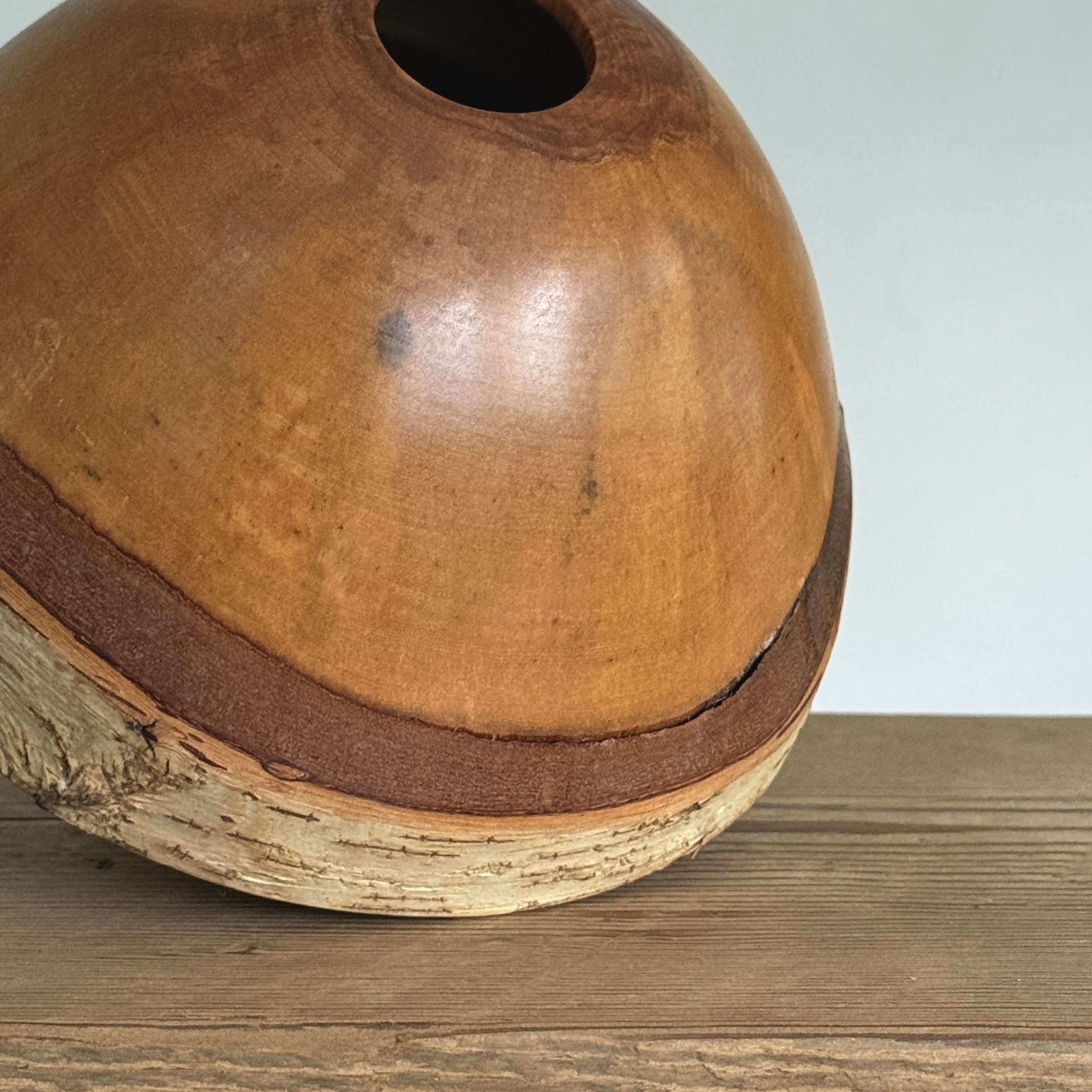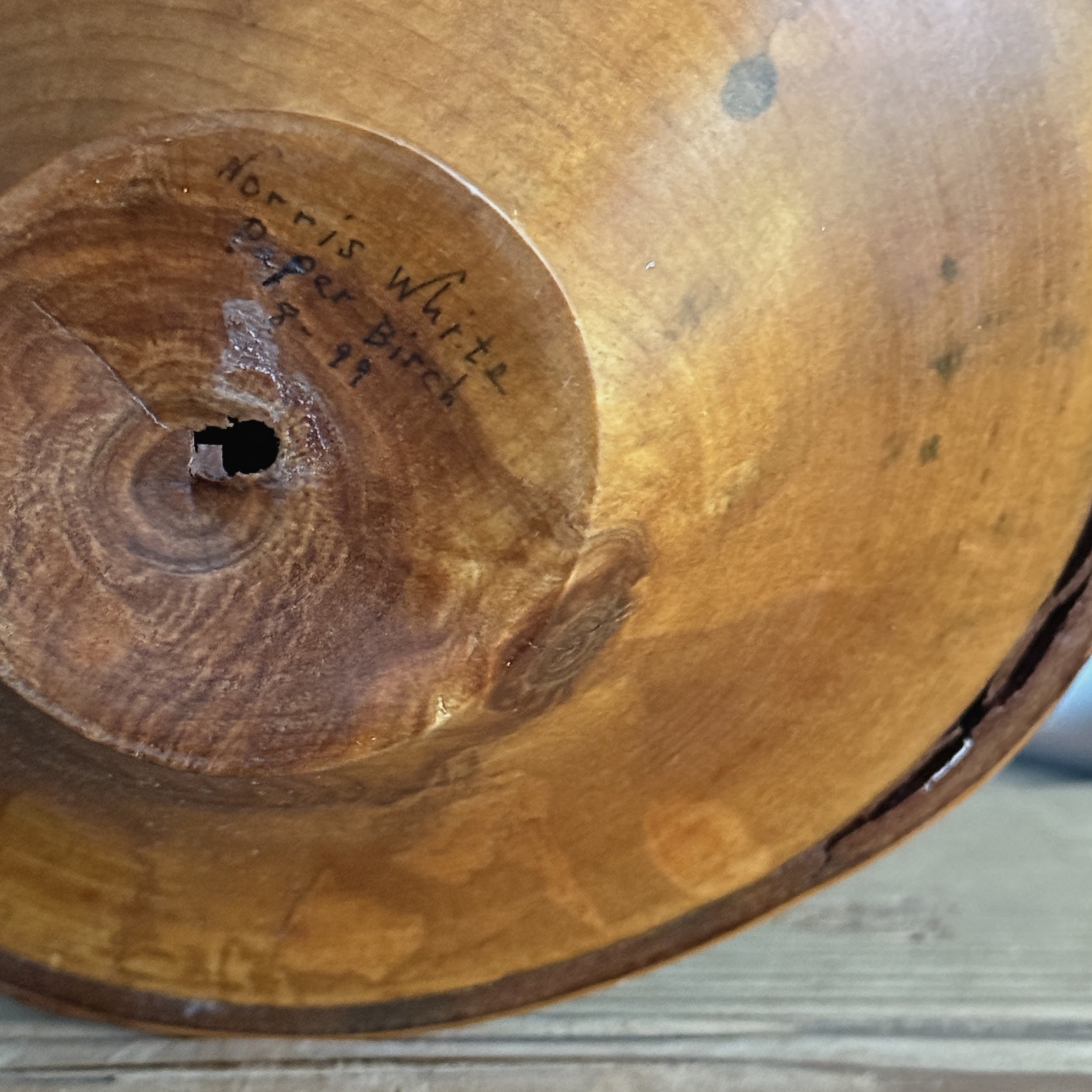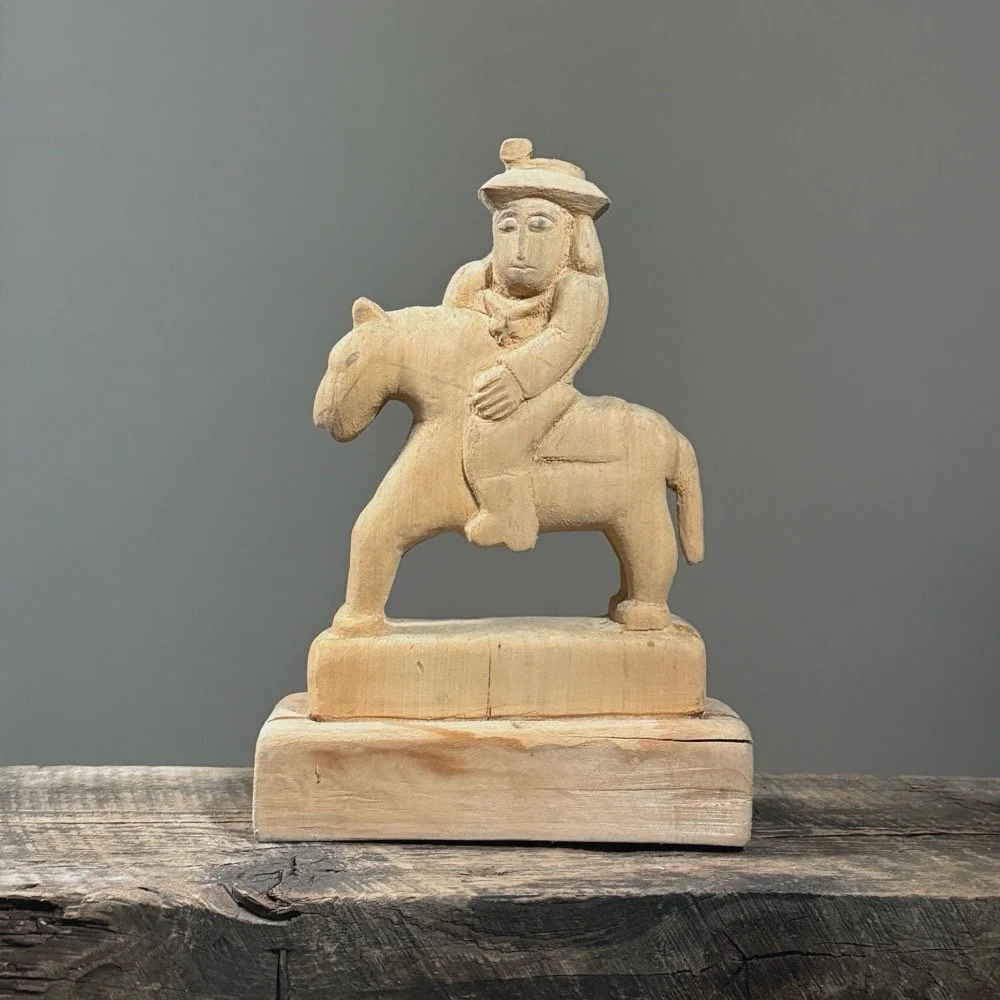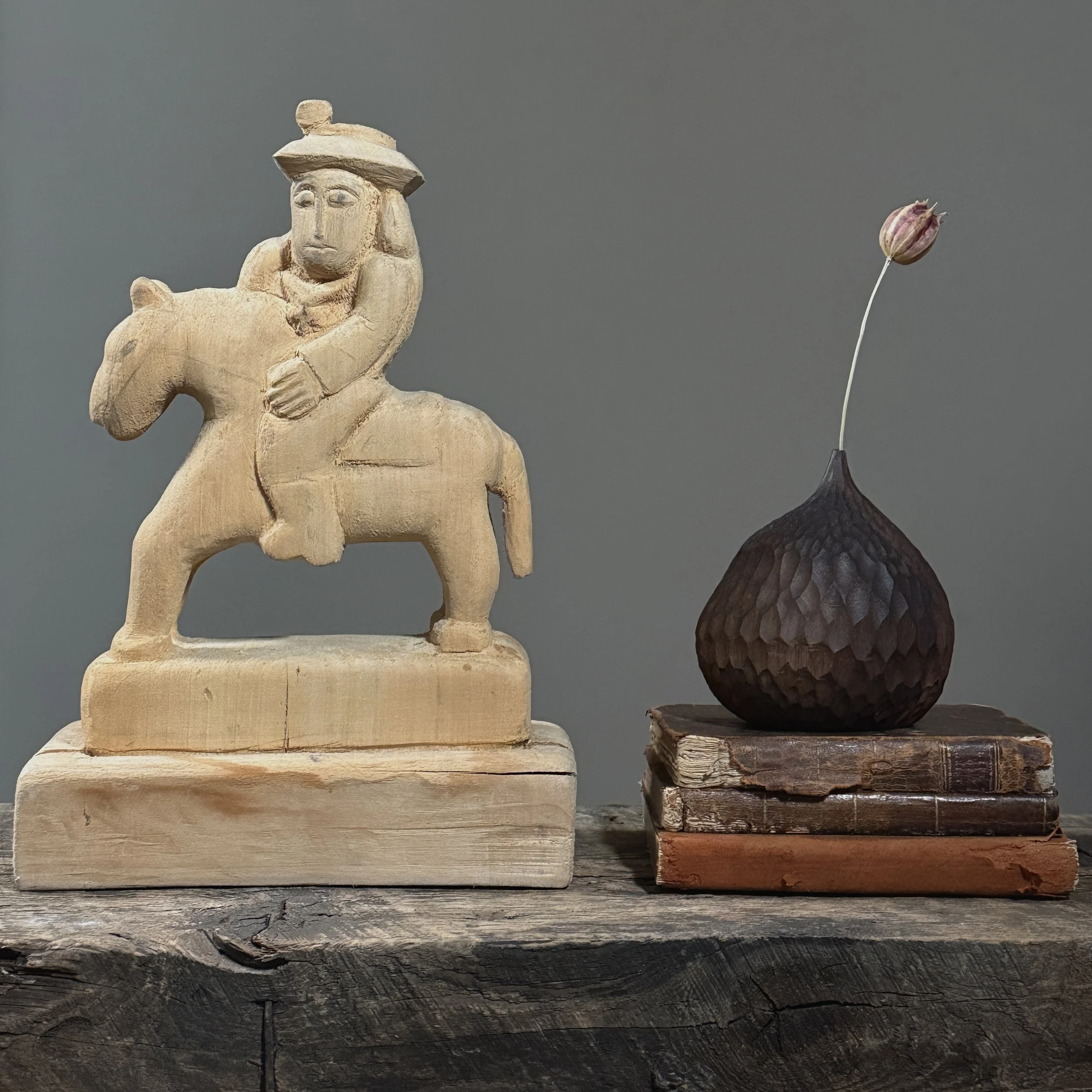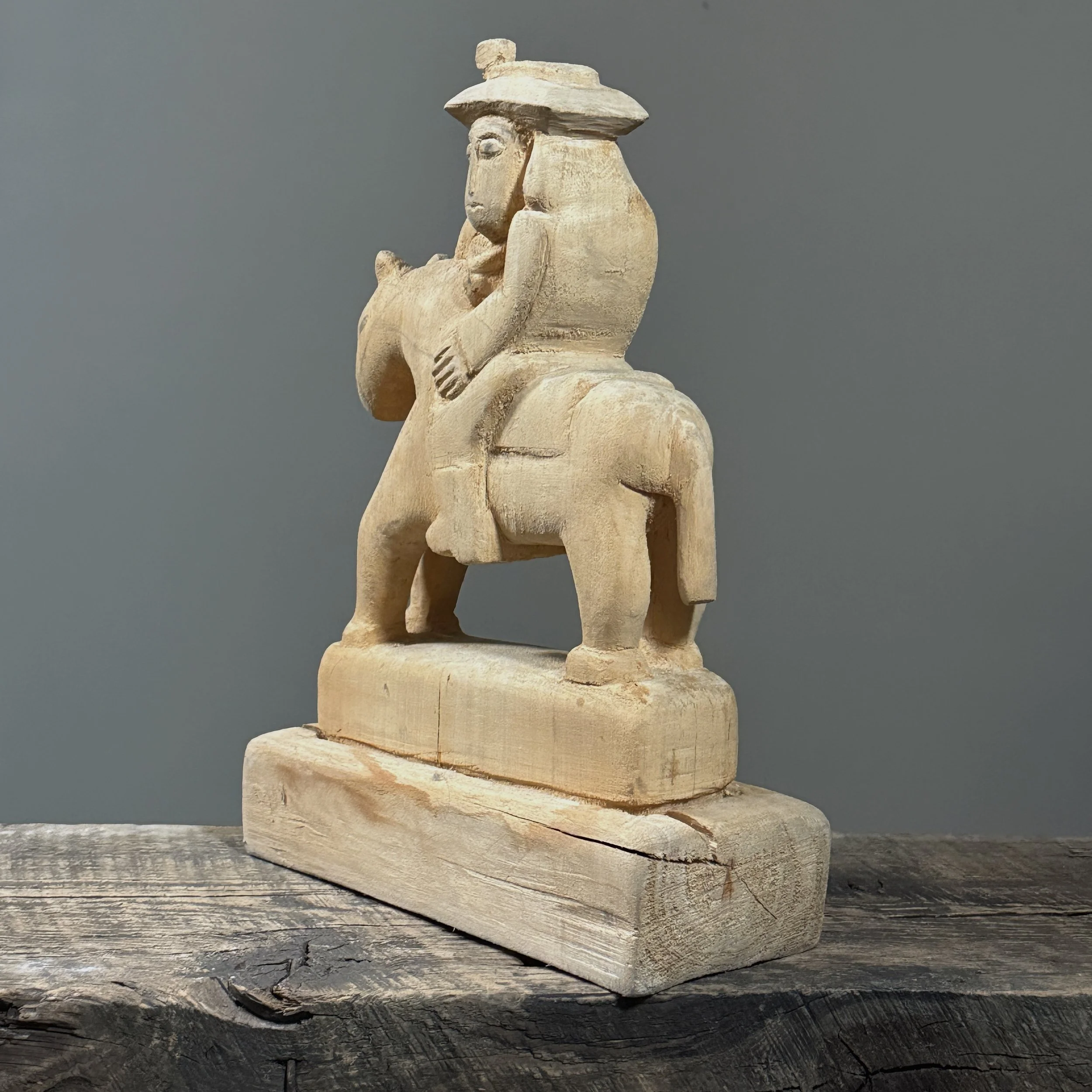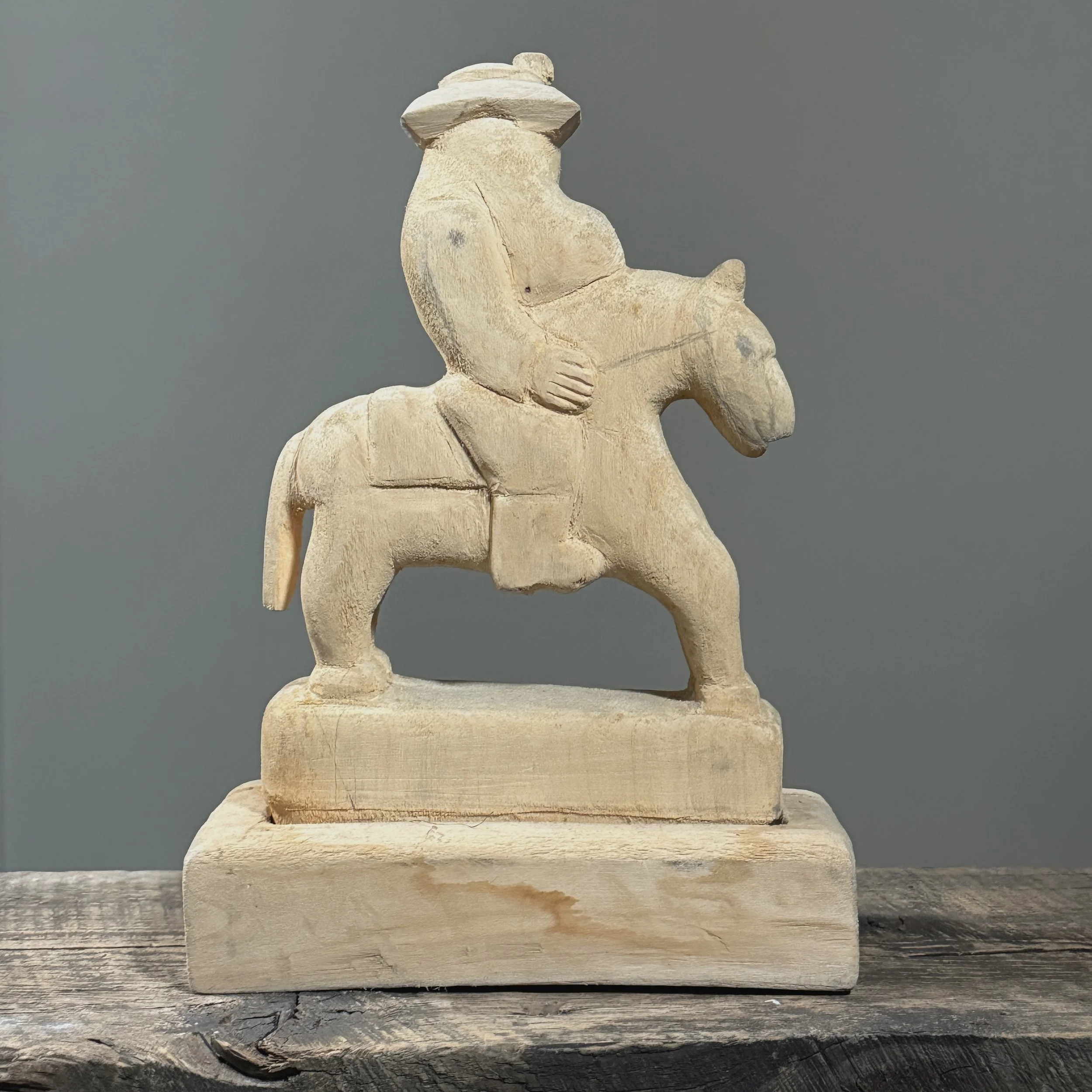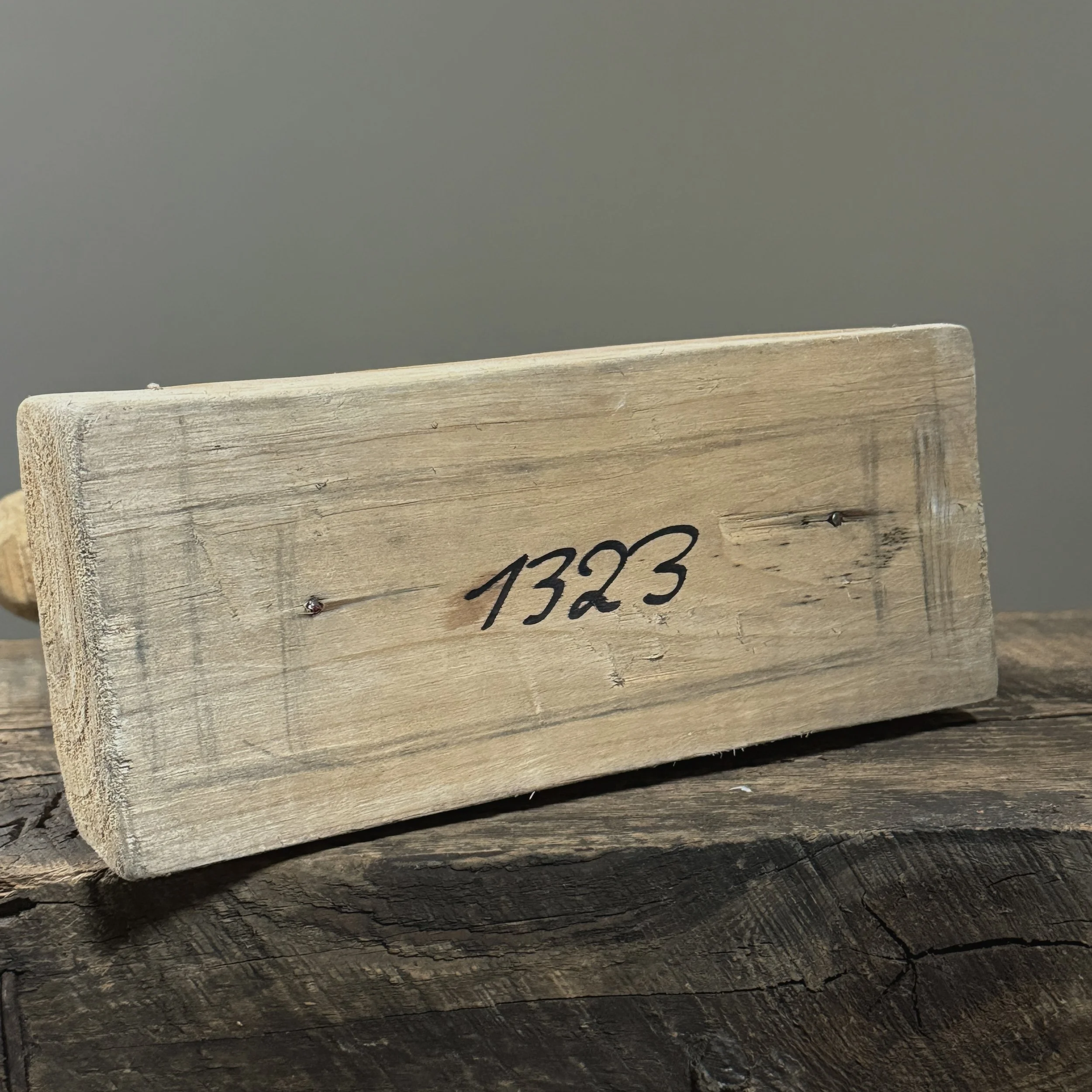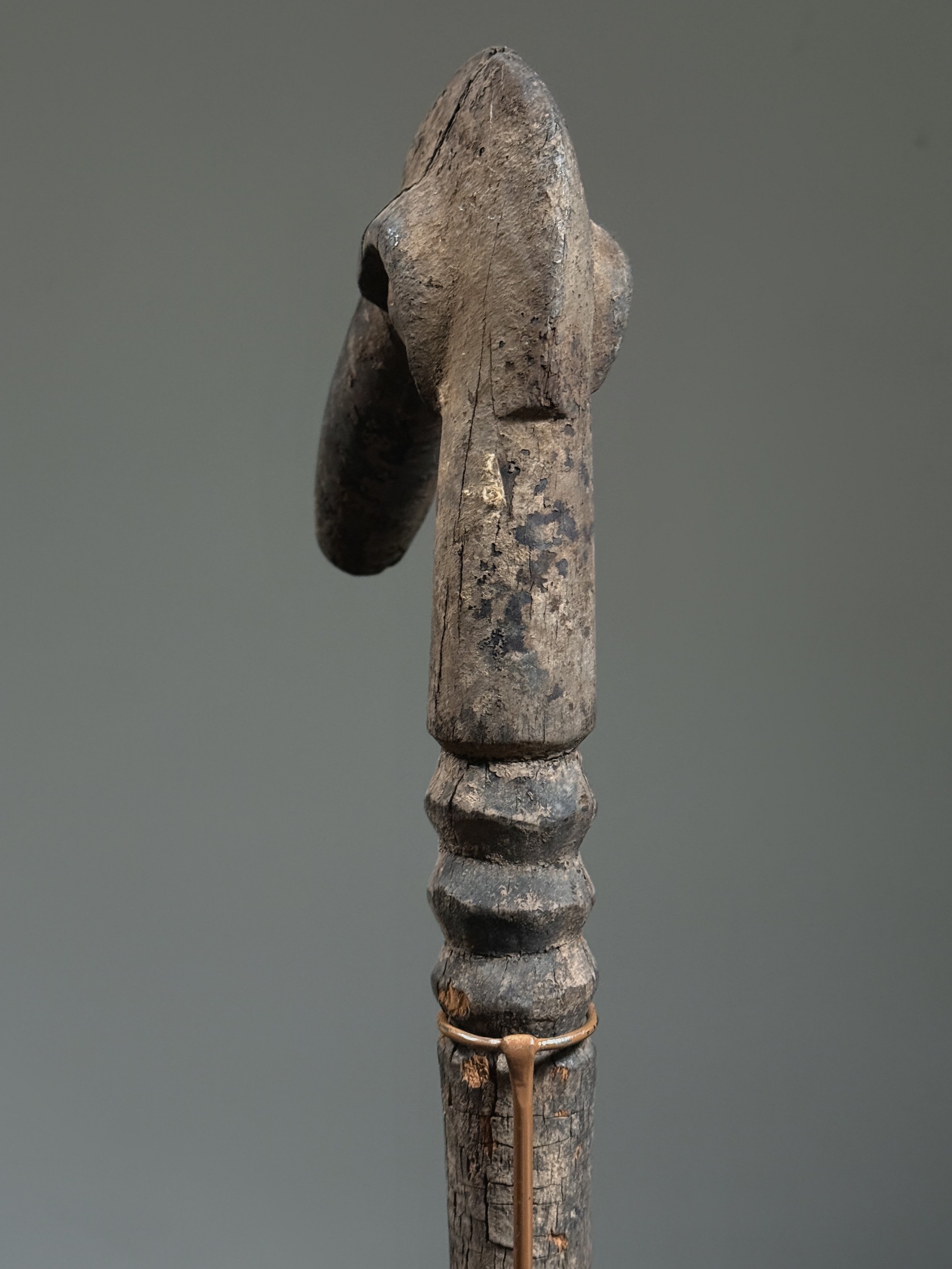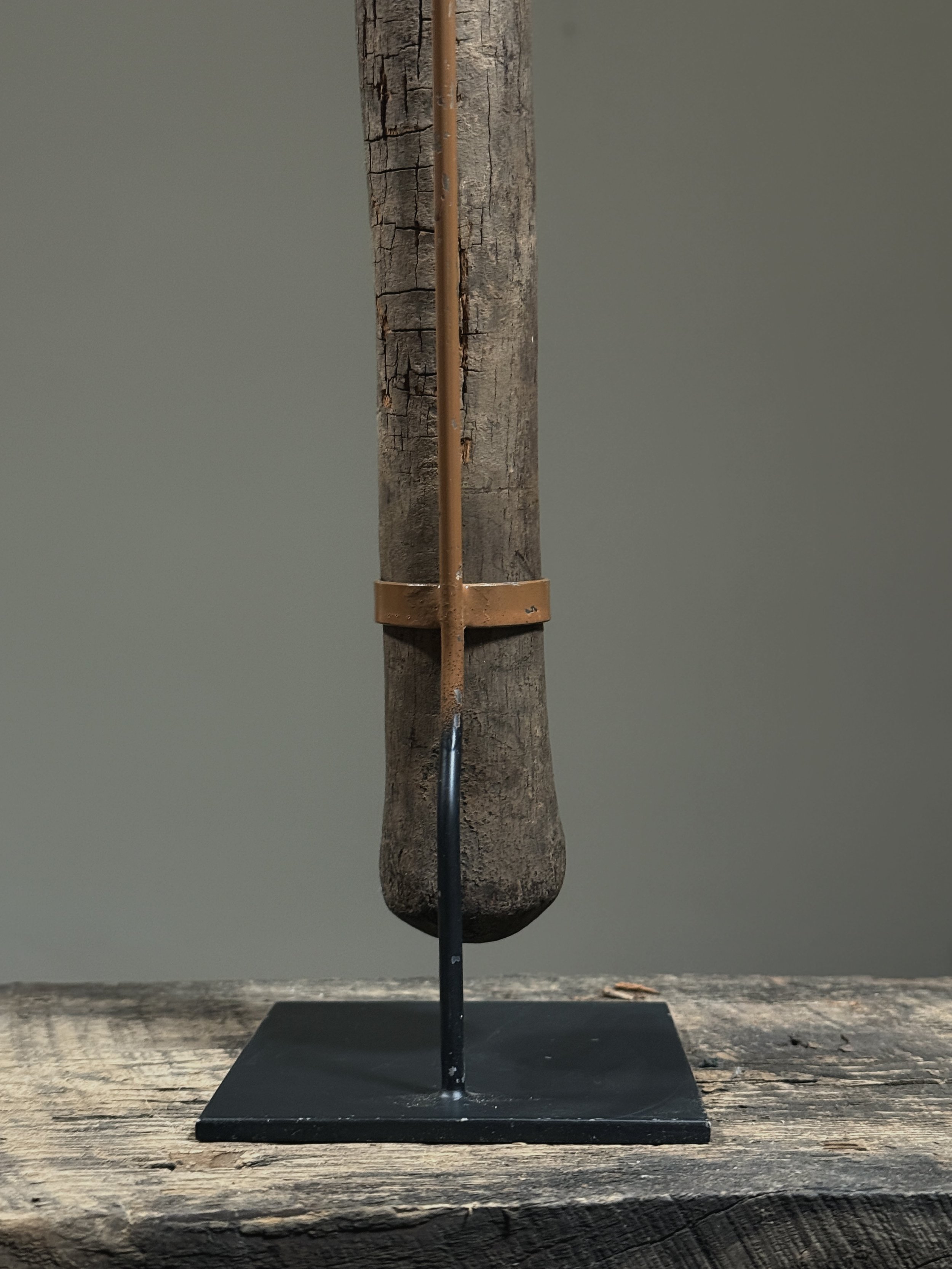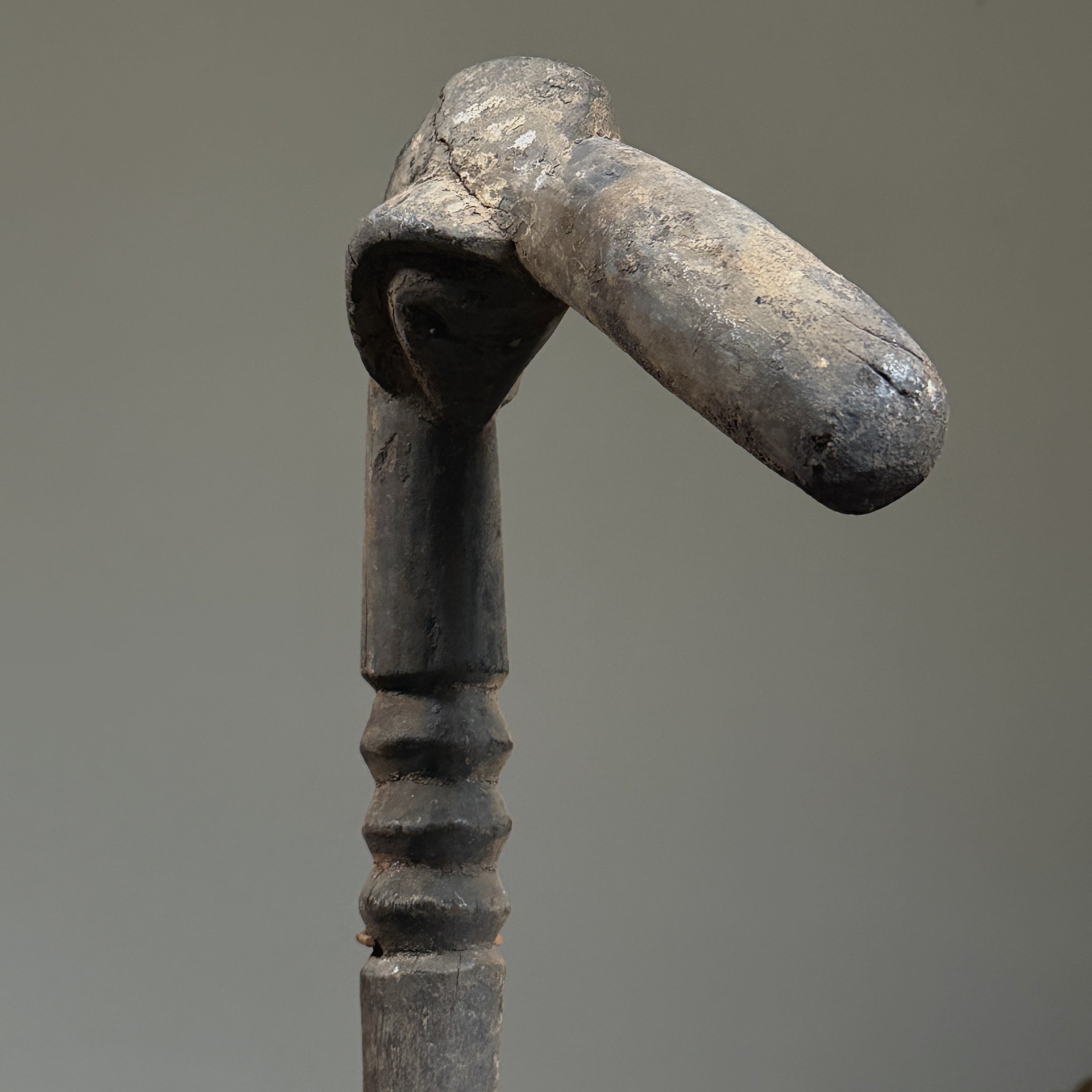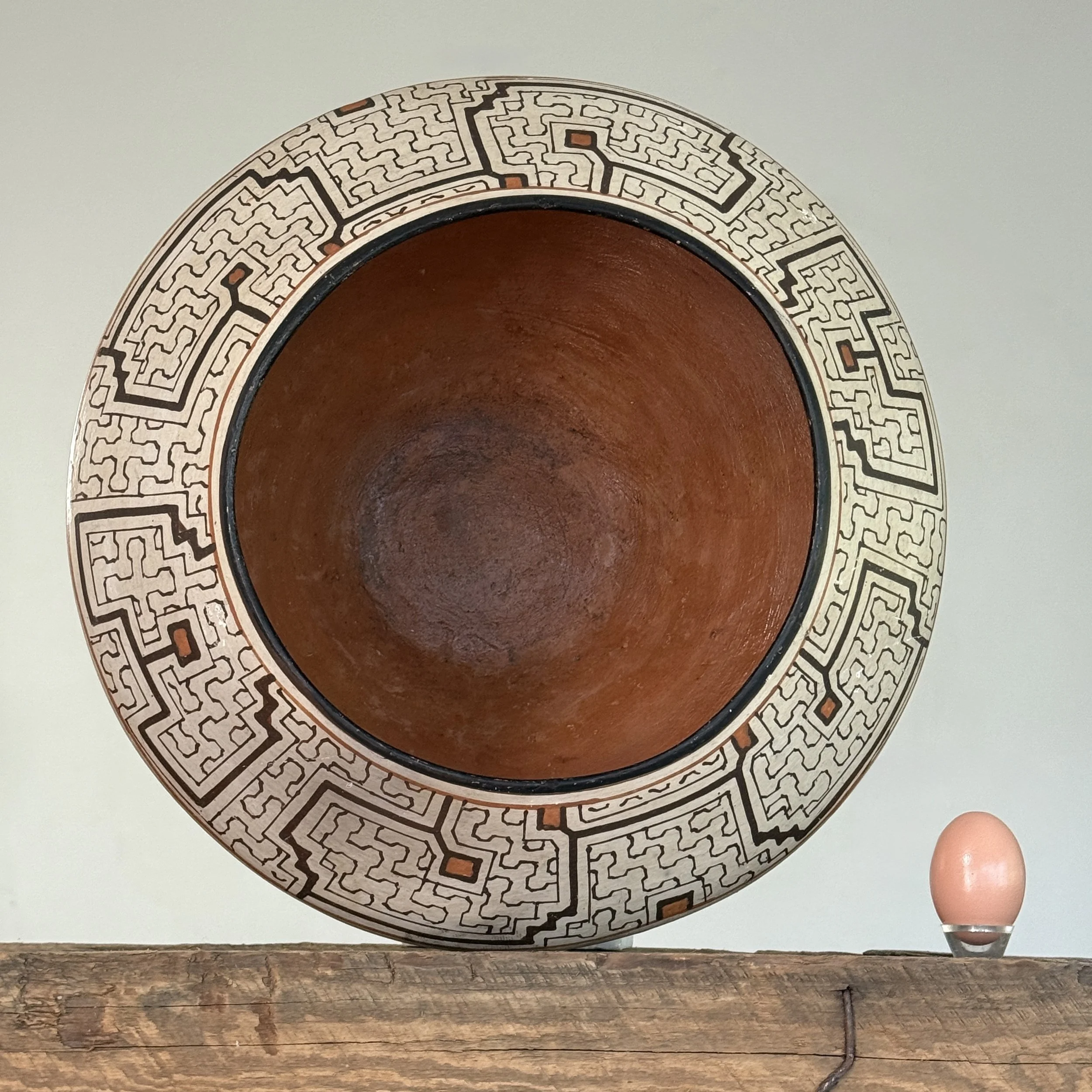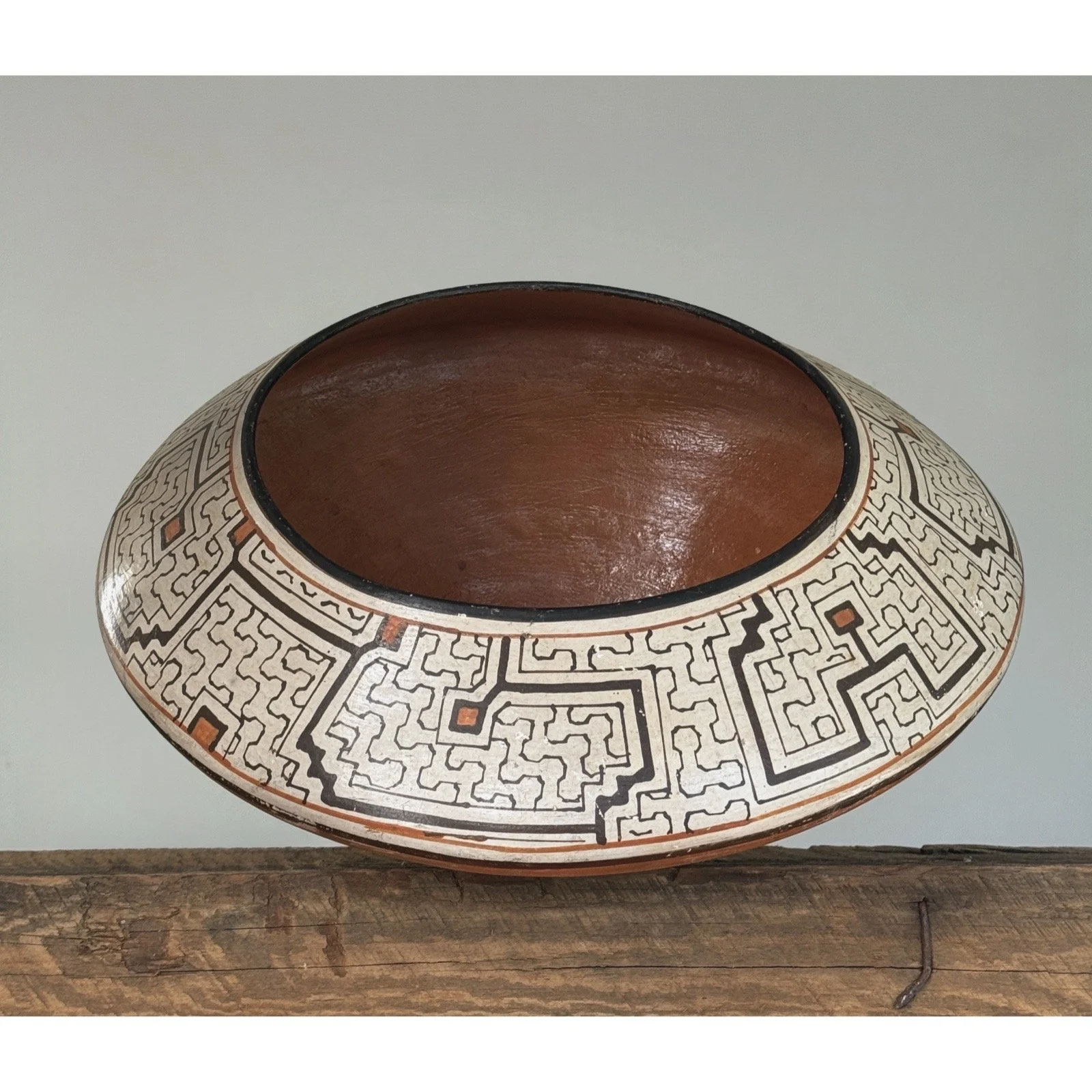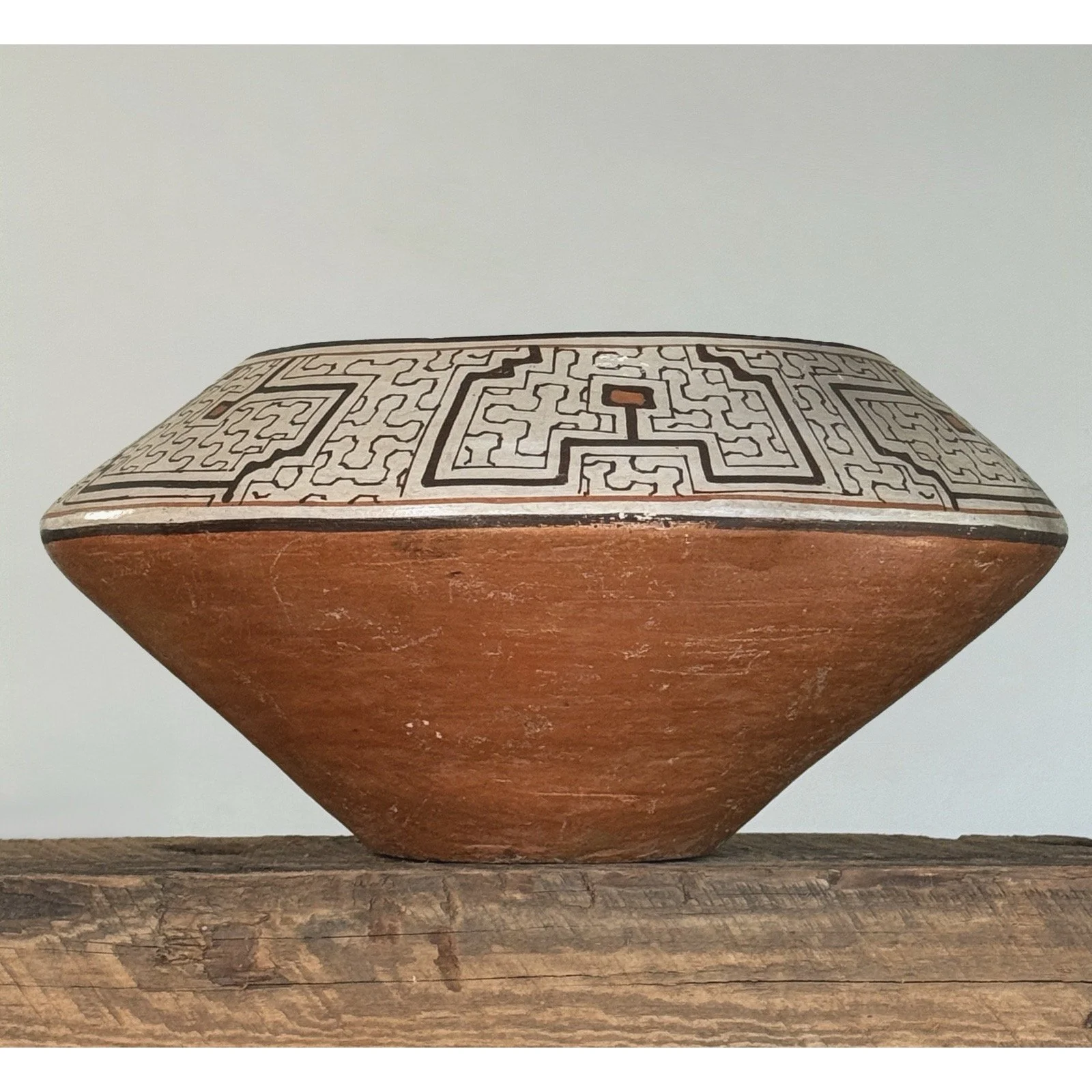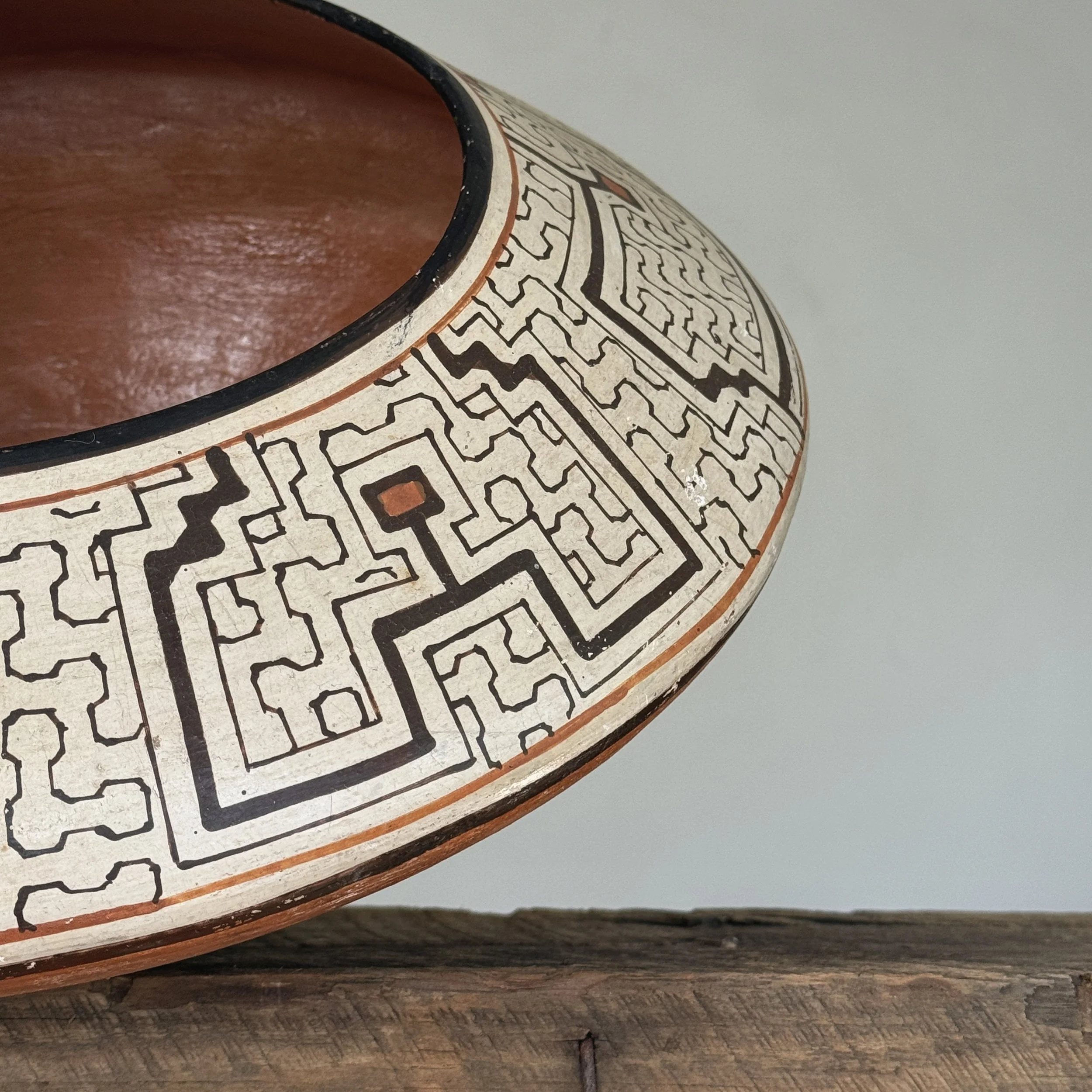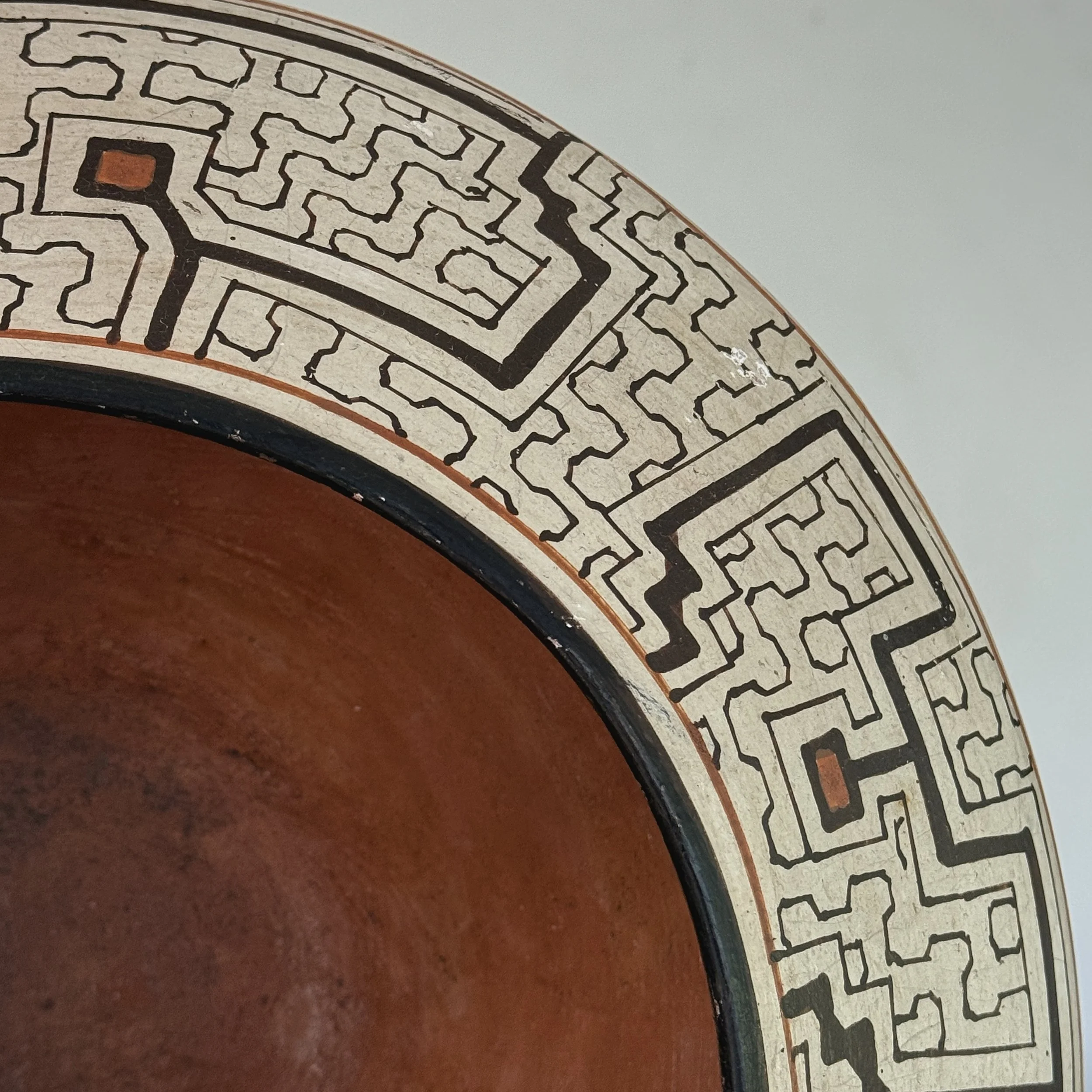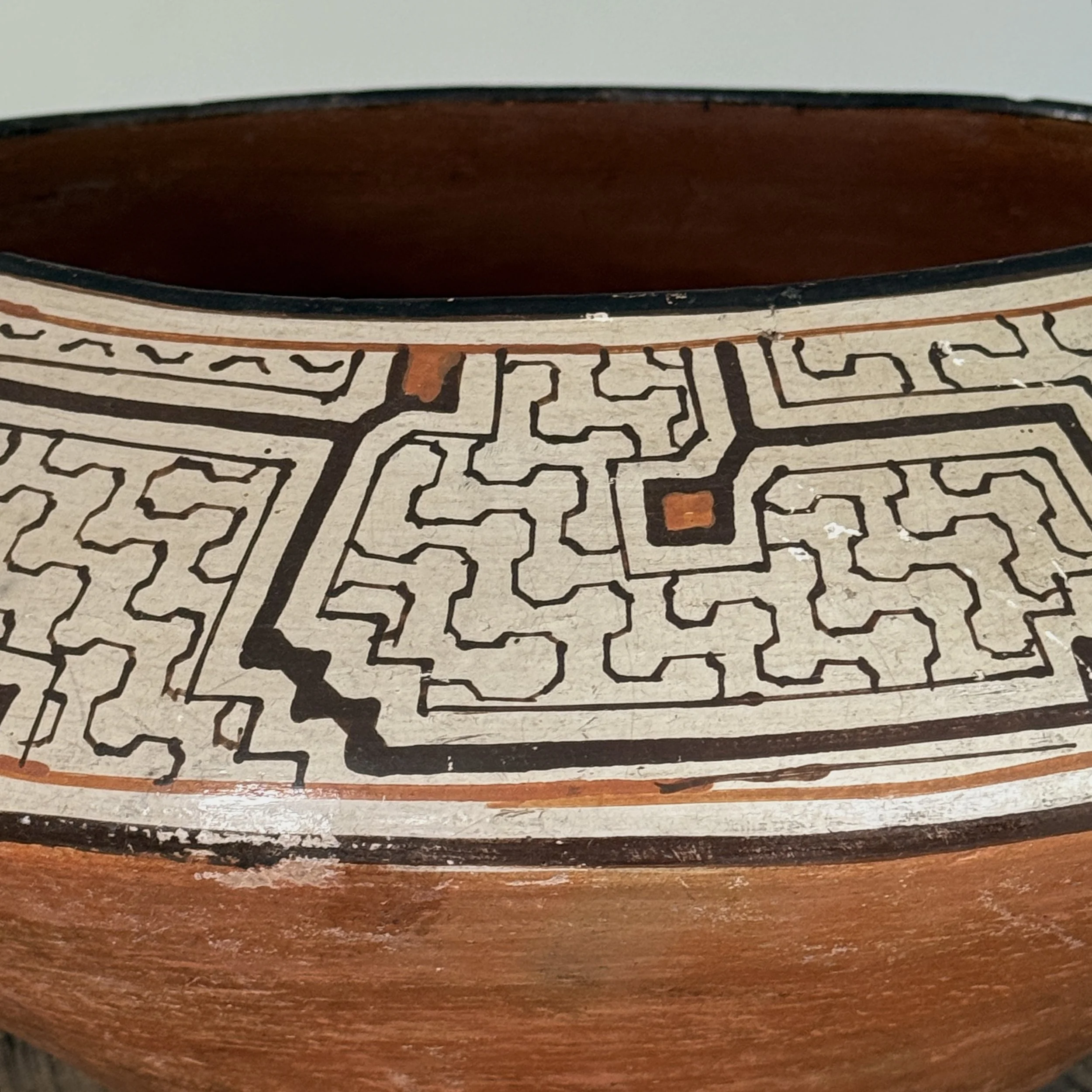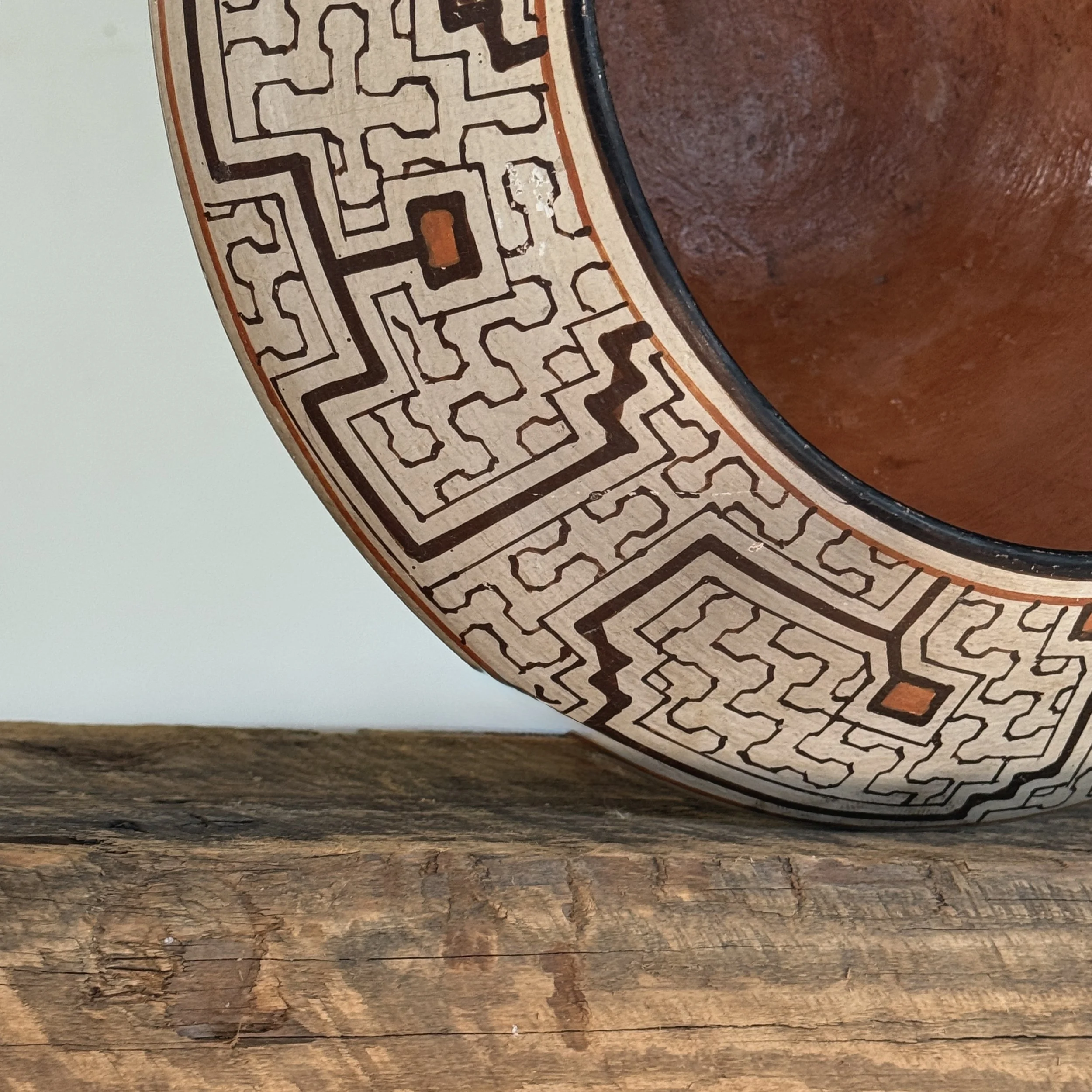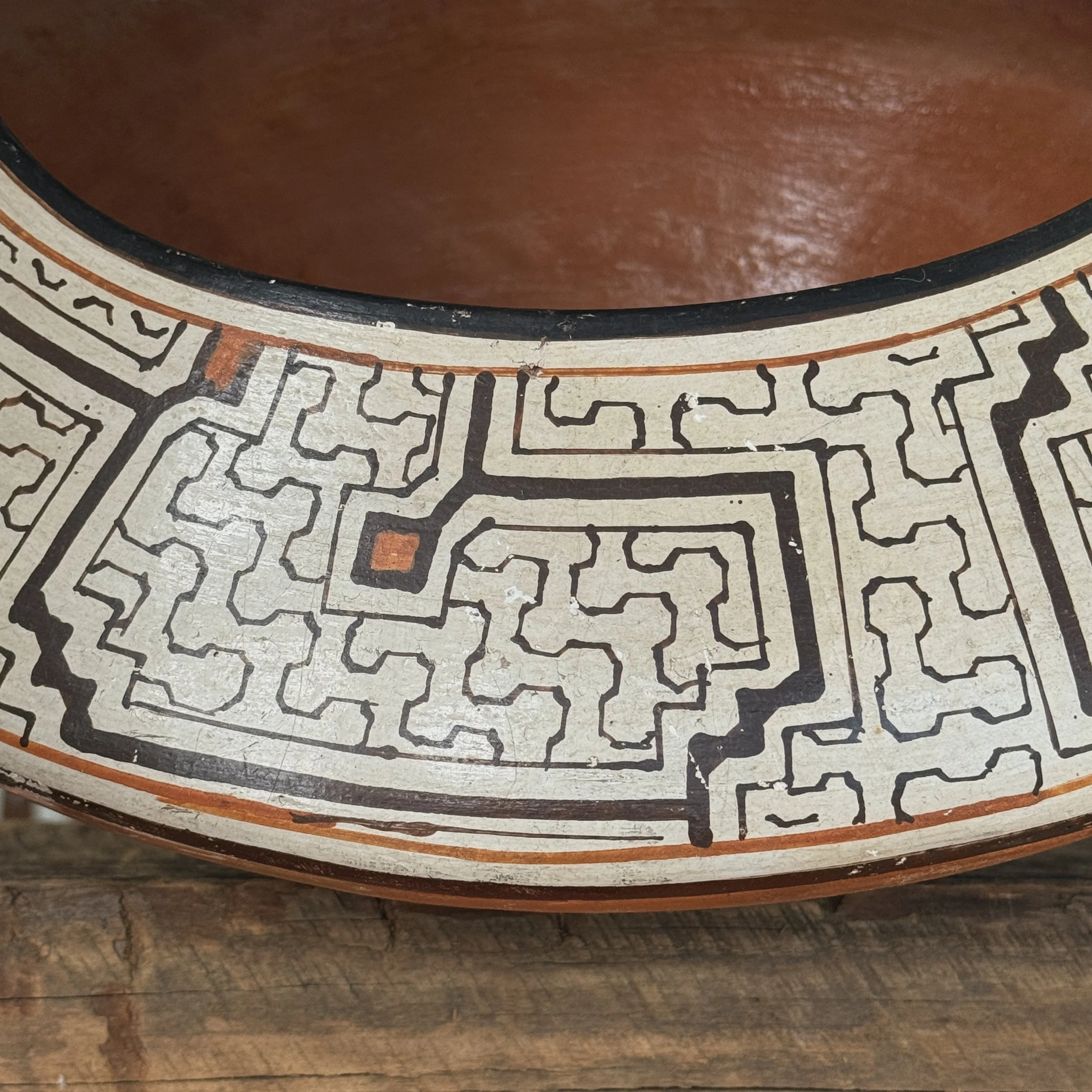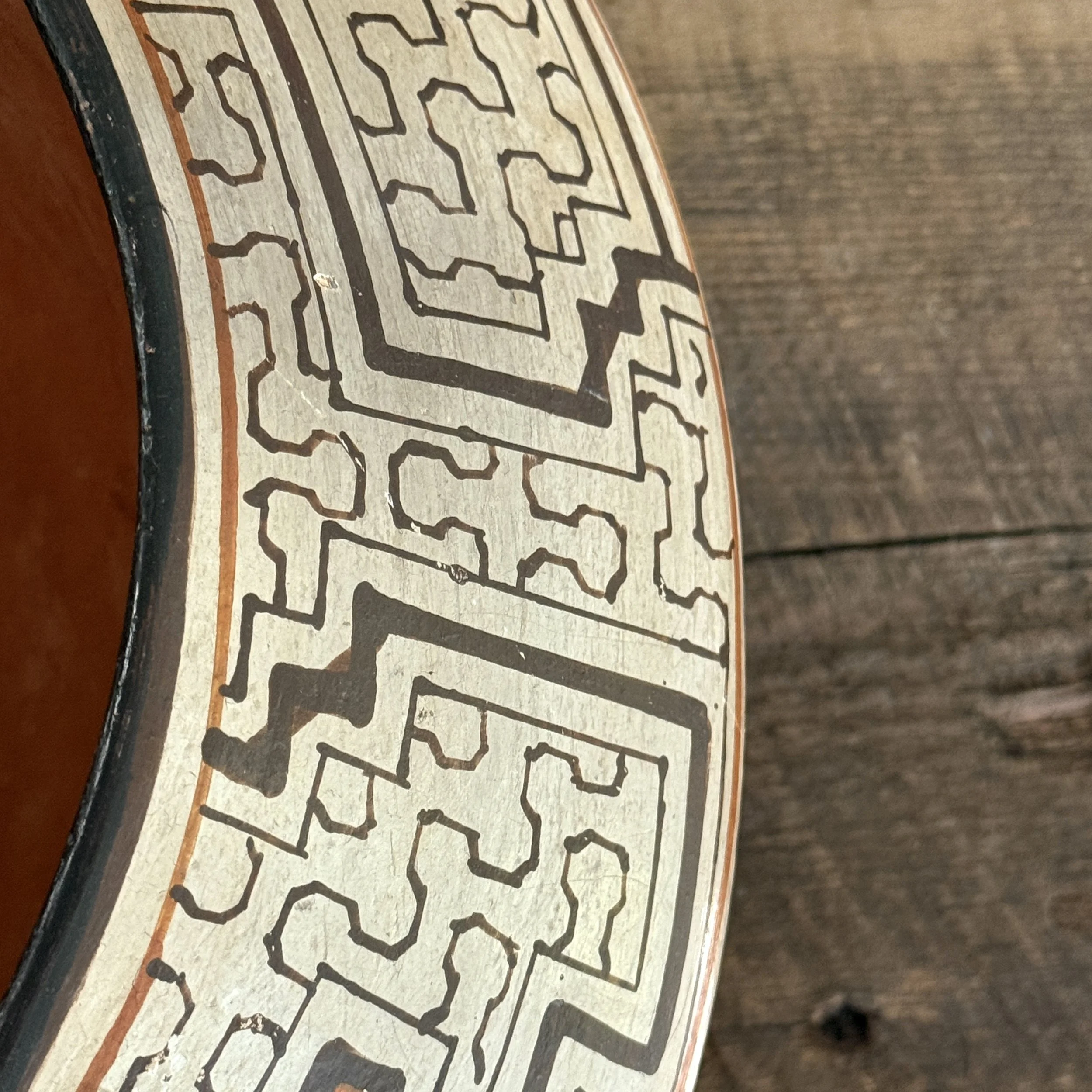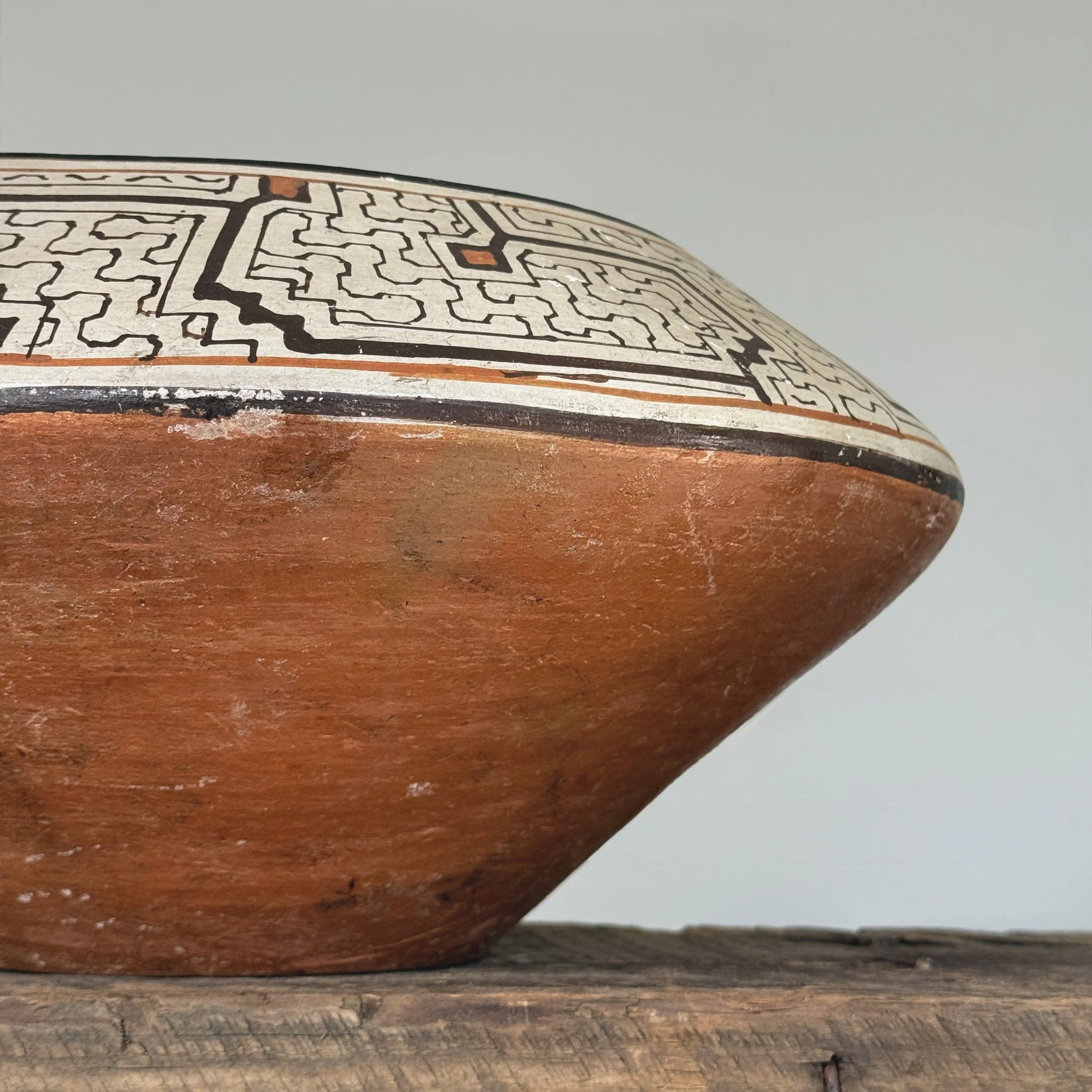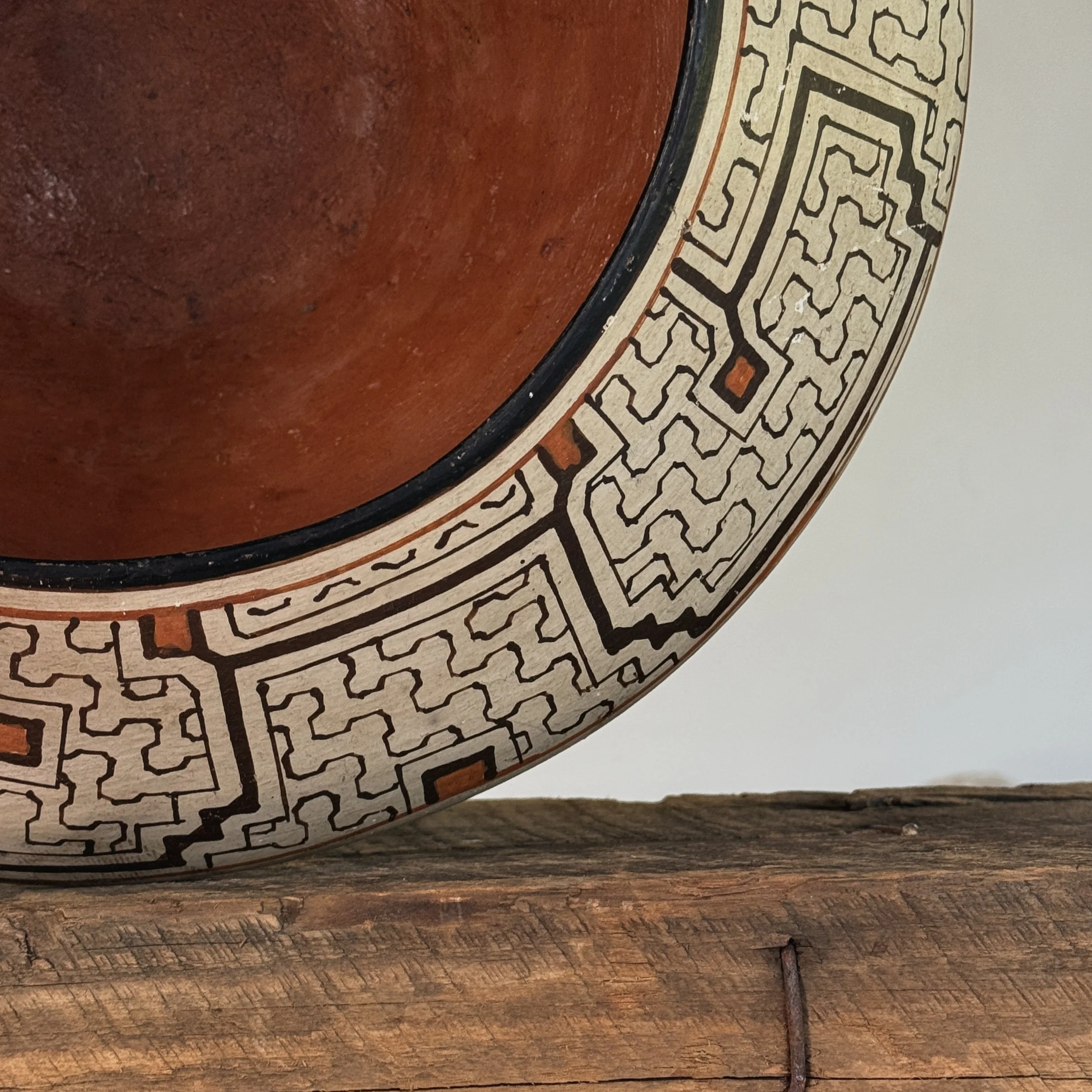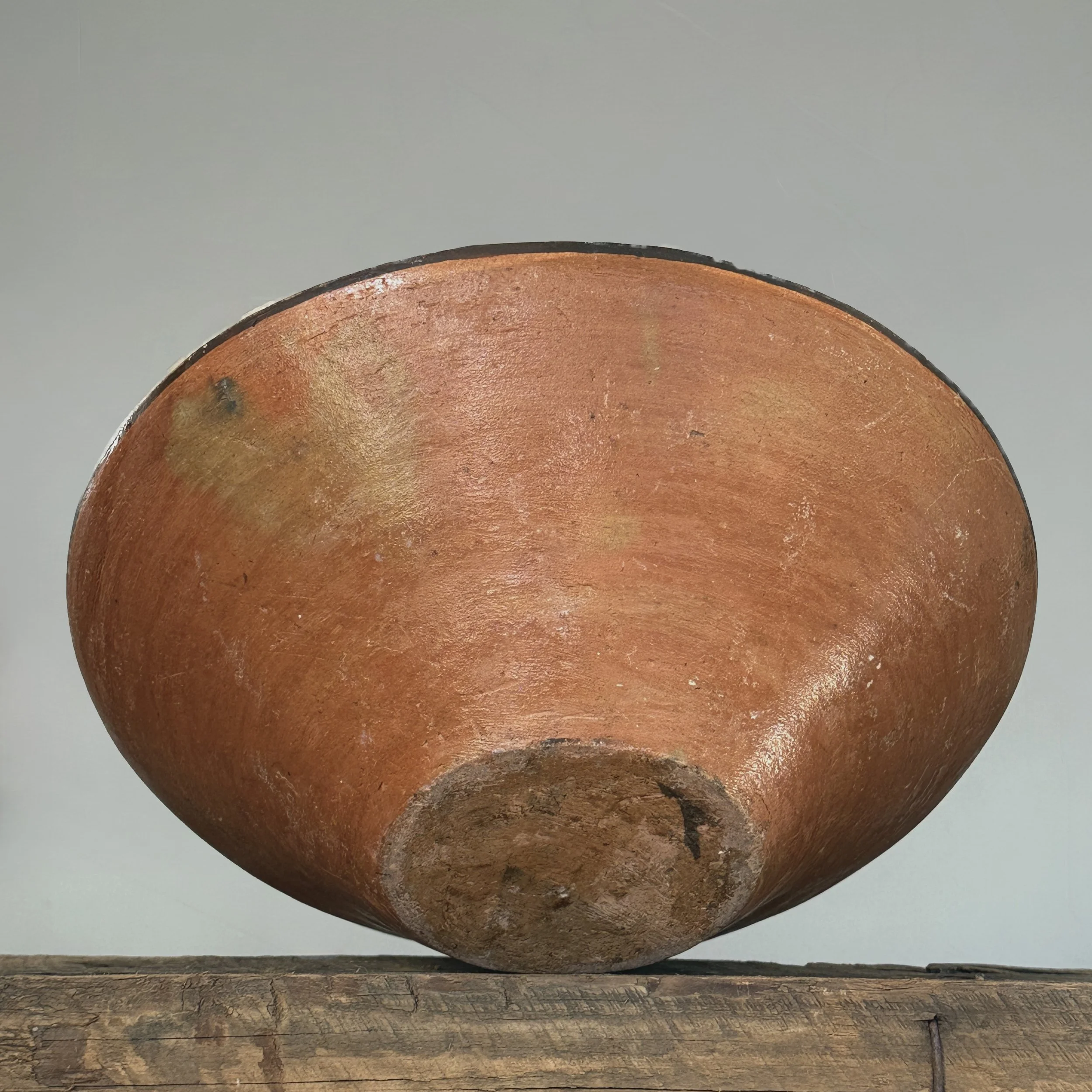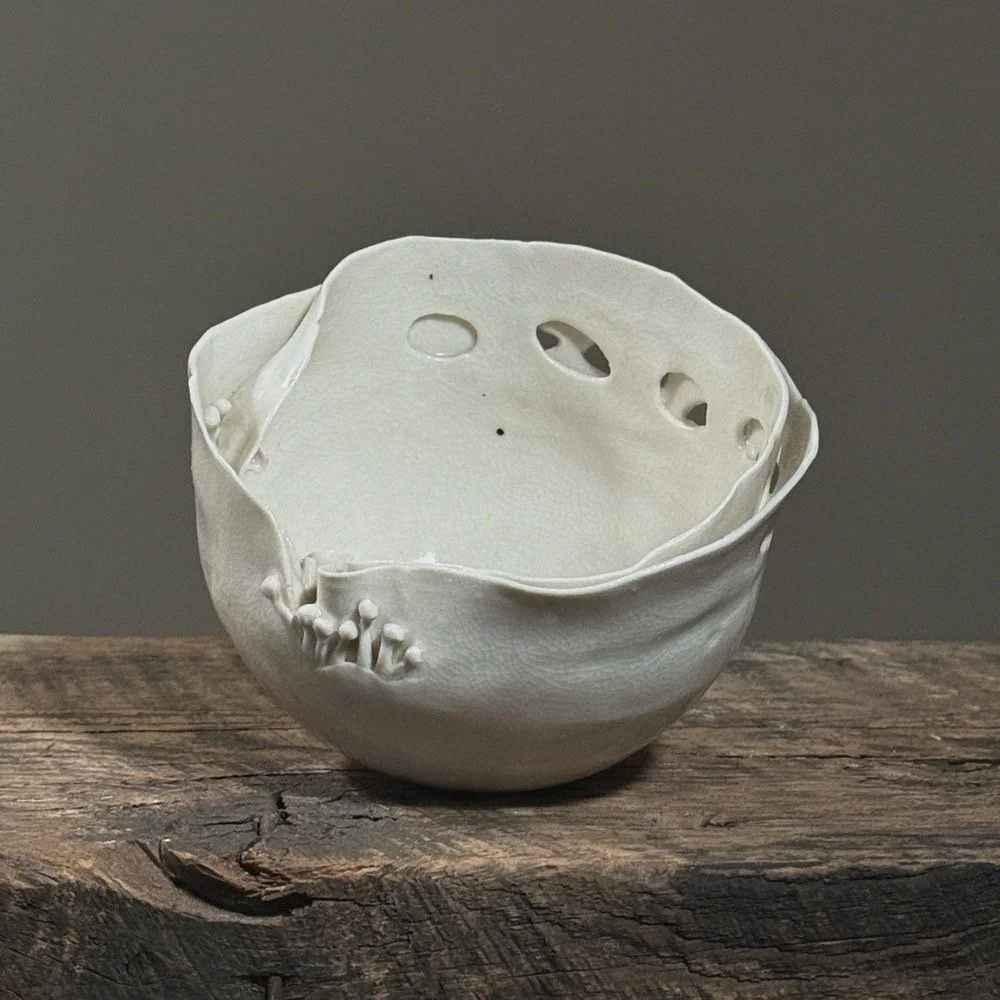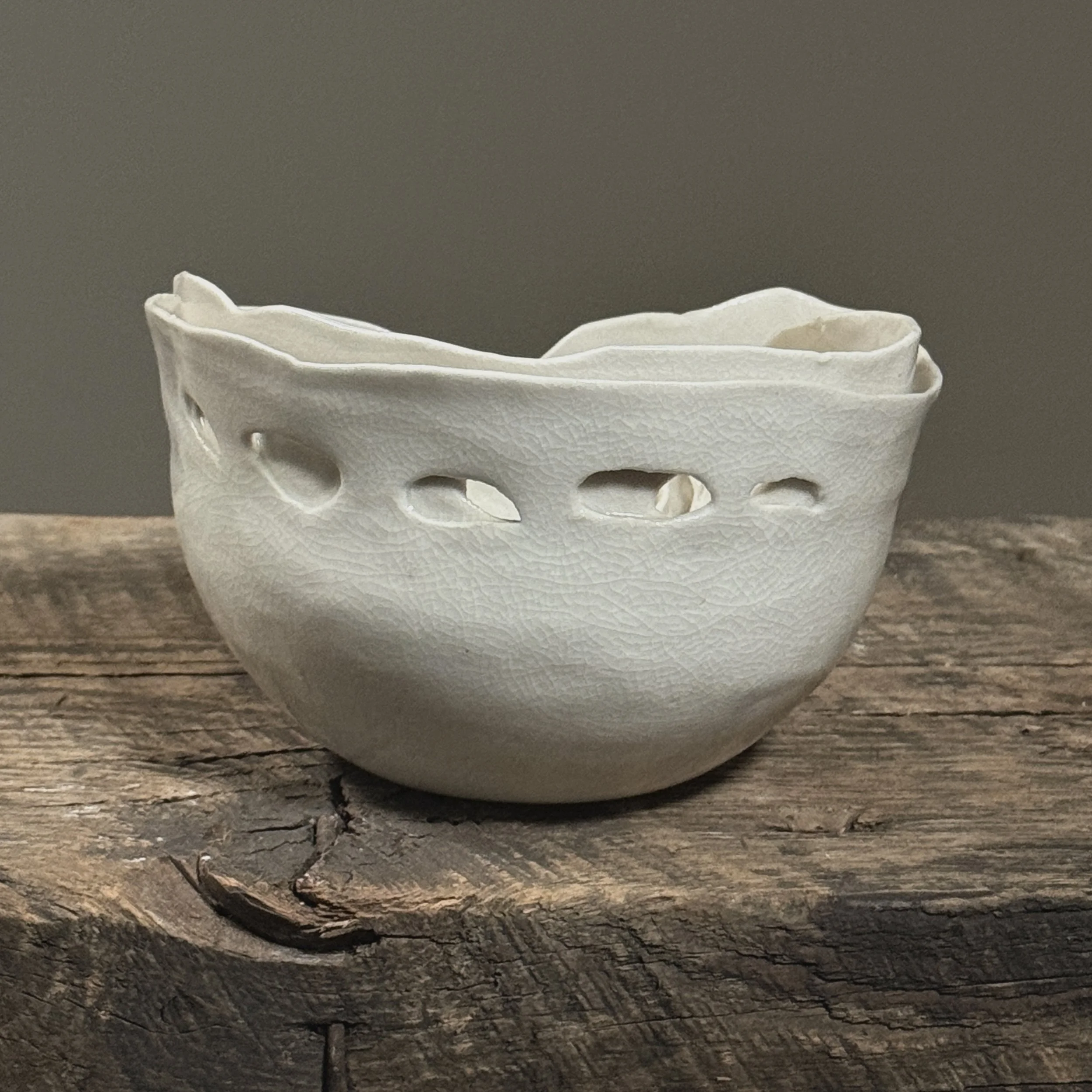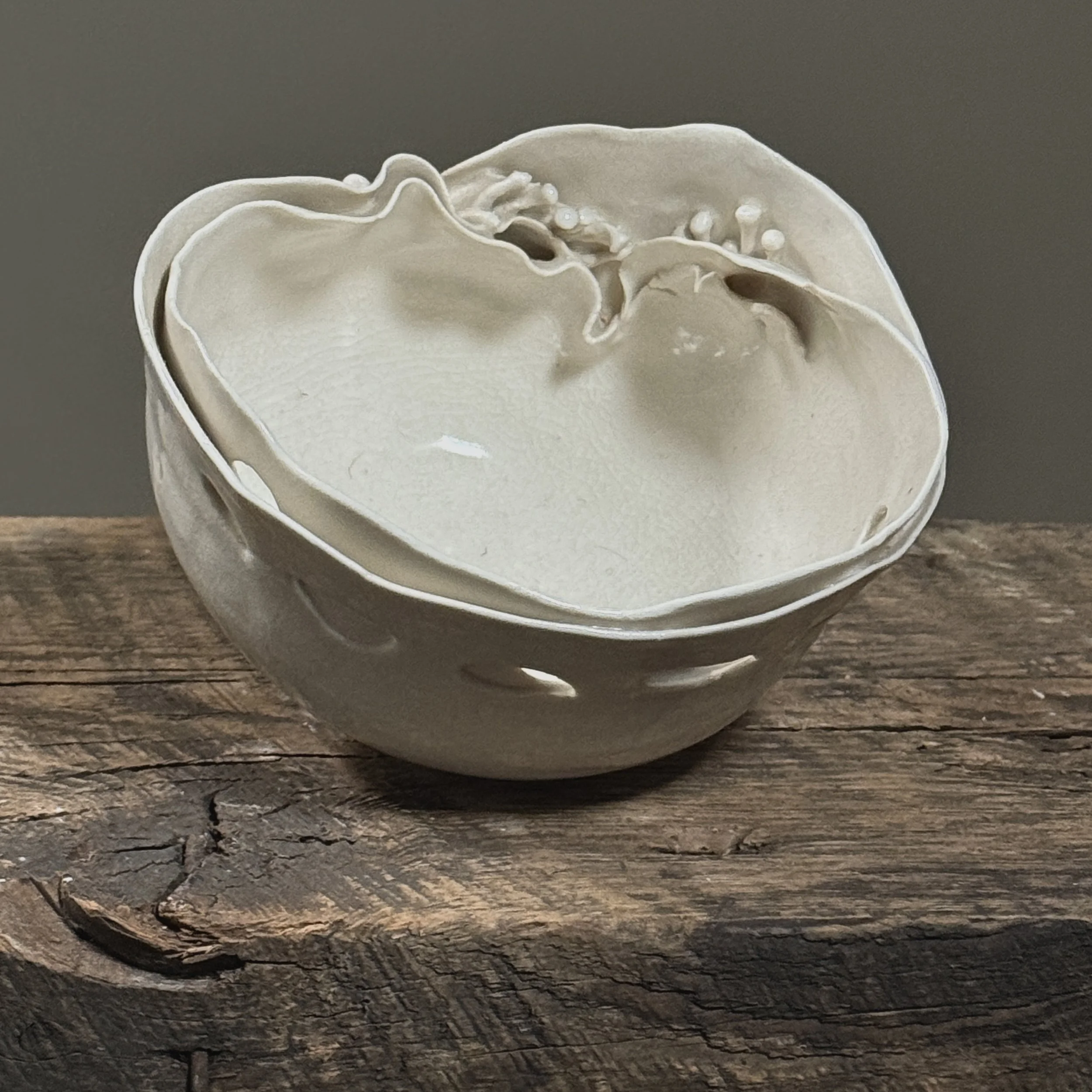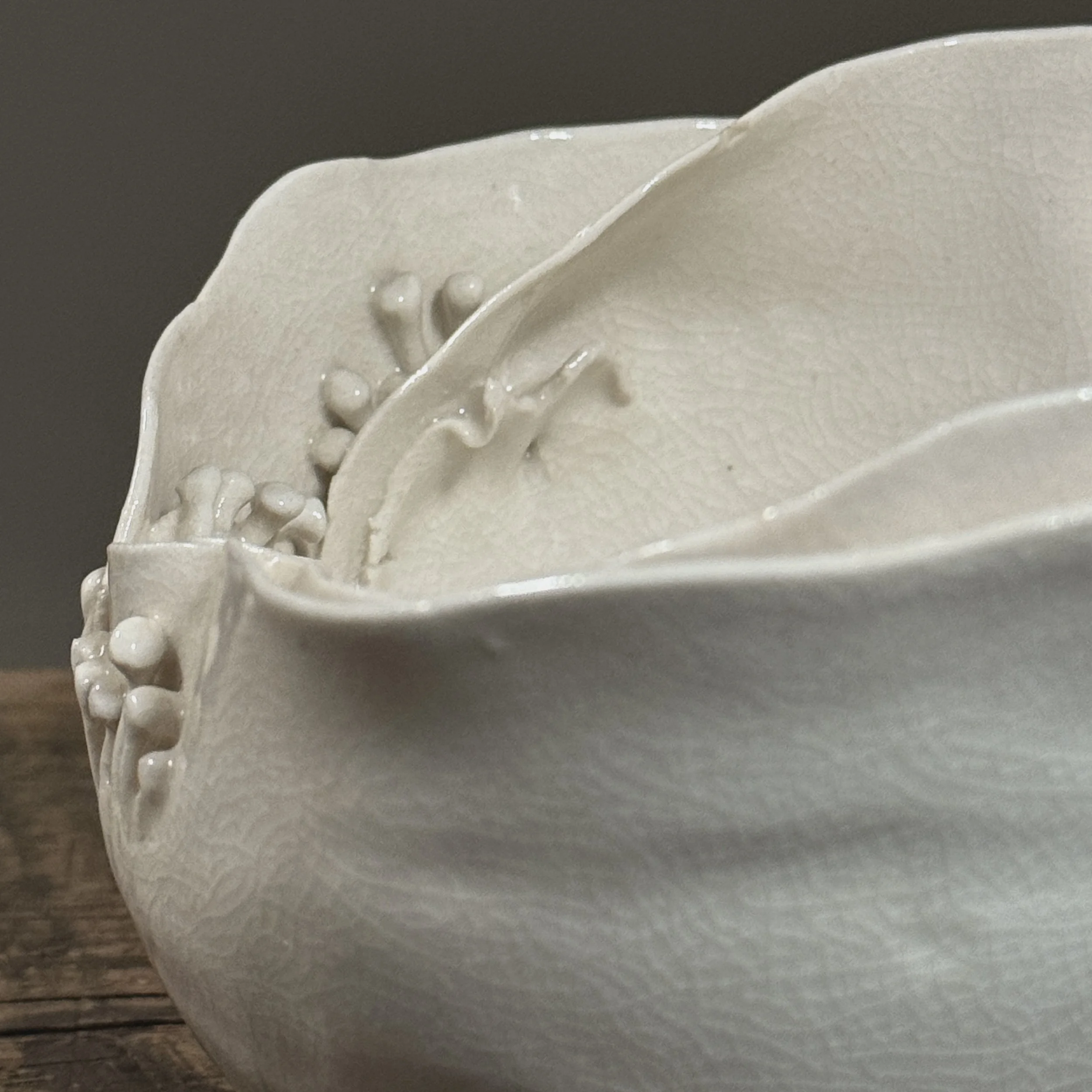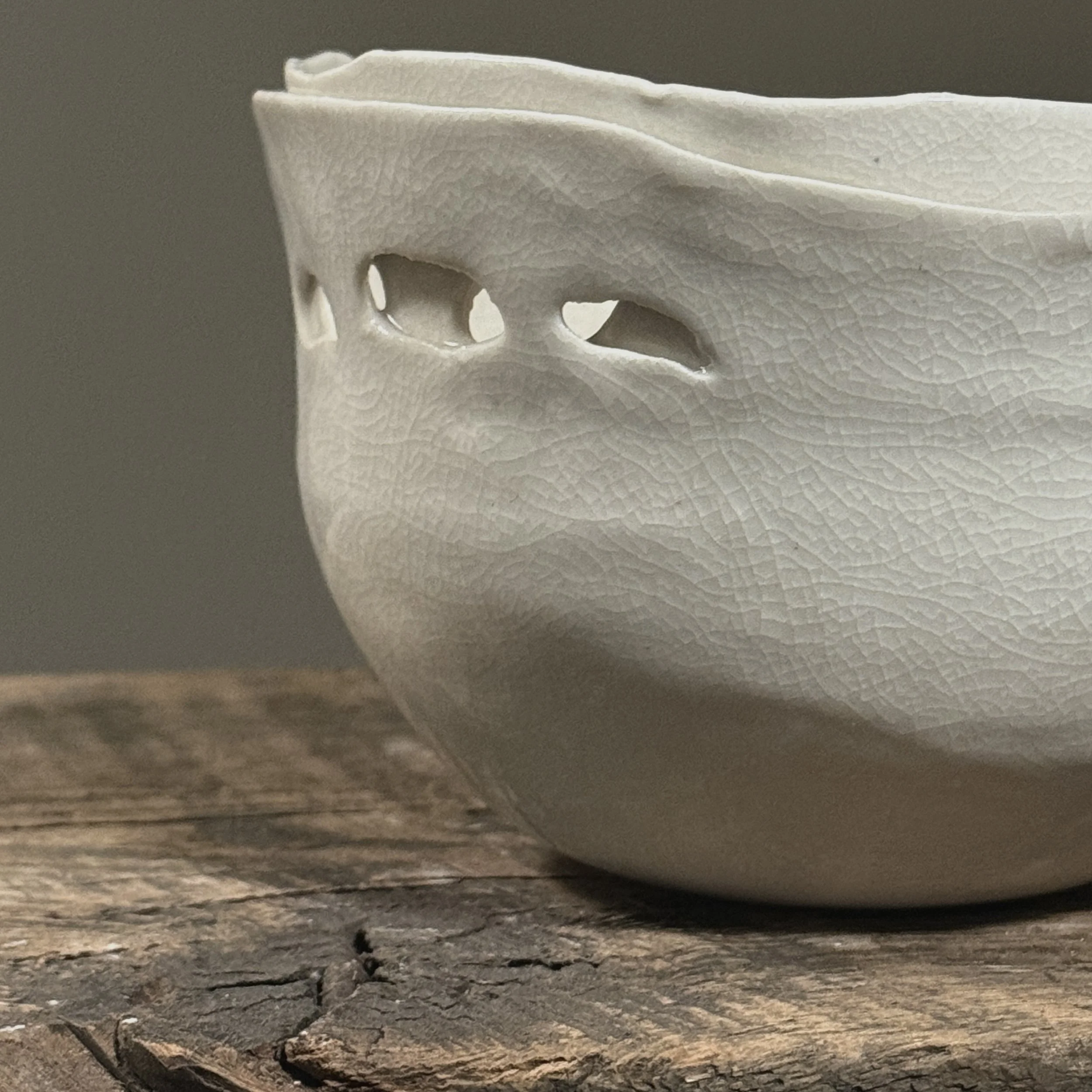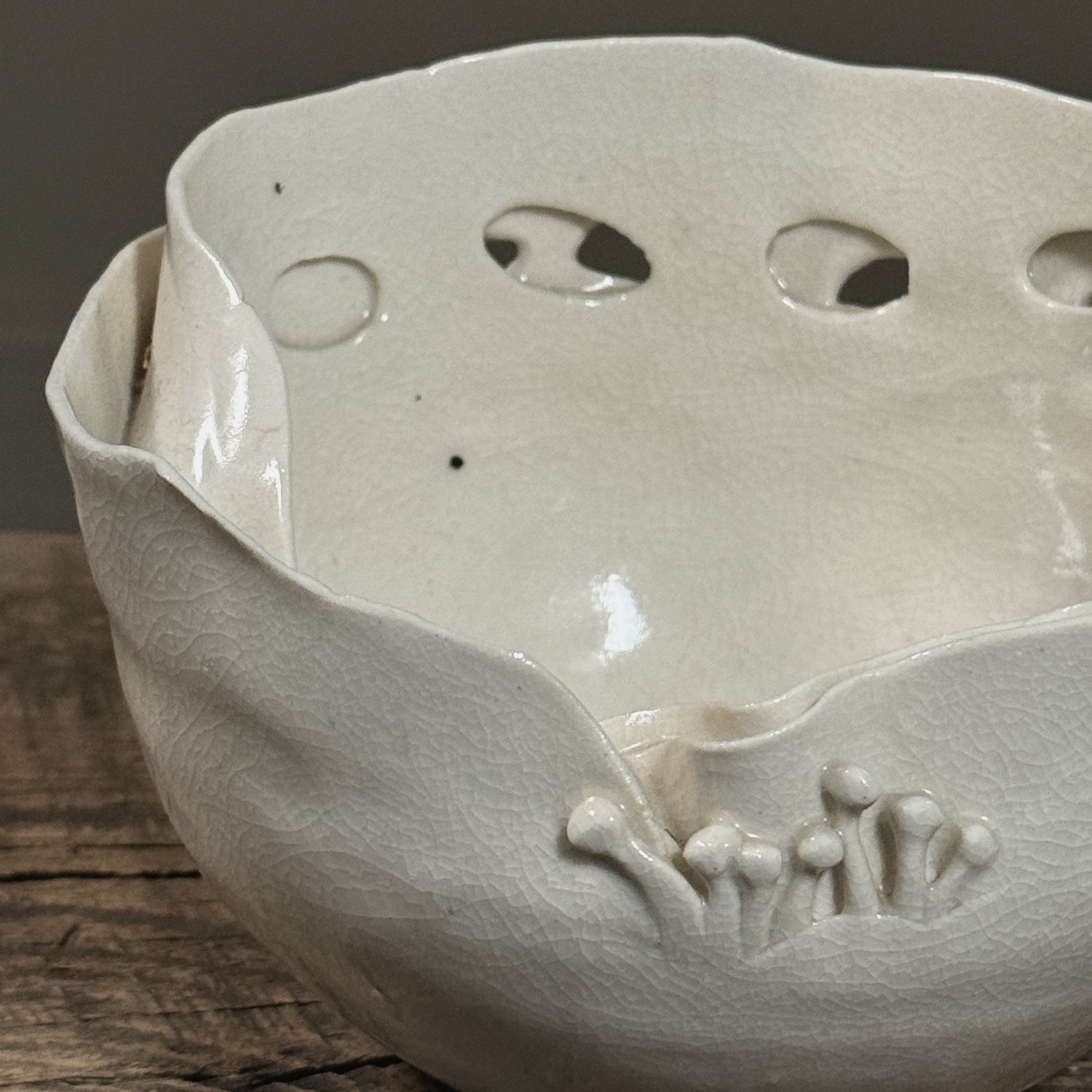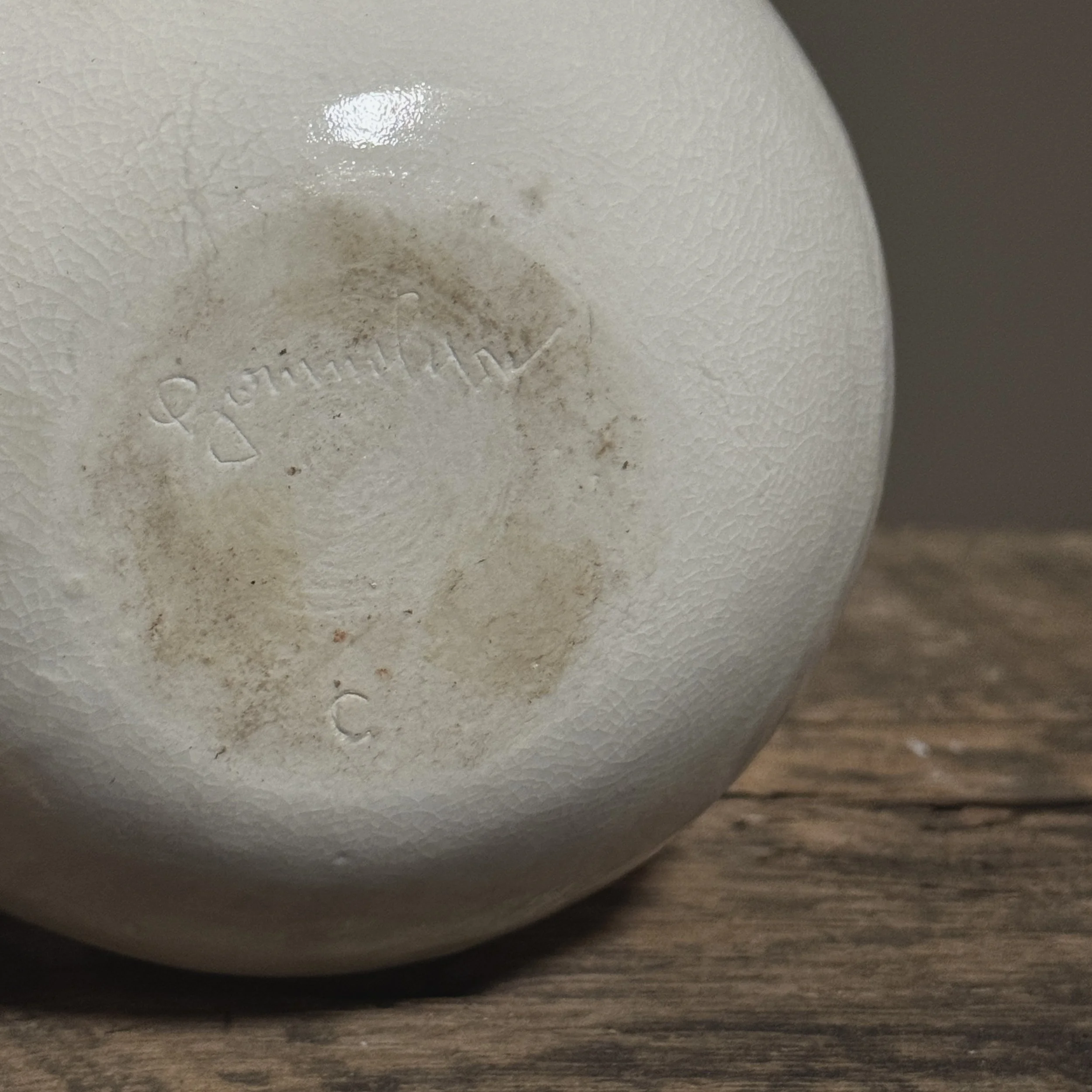 Image 1 of 9
Image 1 of 9

 Image 2 of 9
Image 2 of 9

 Image 3 of 9
Image 3 of 9

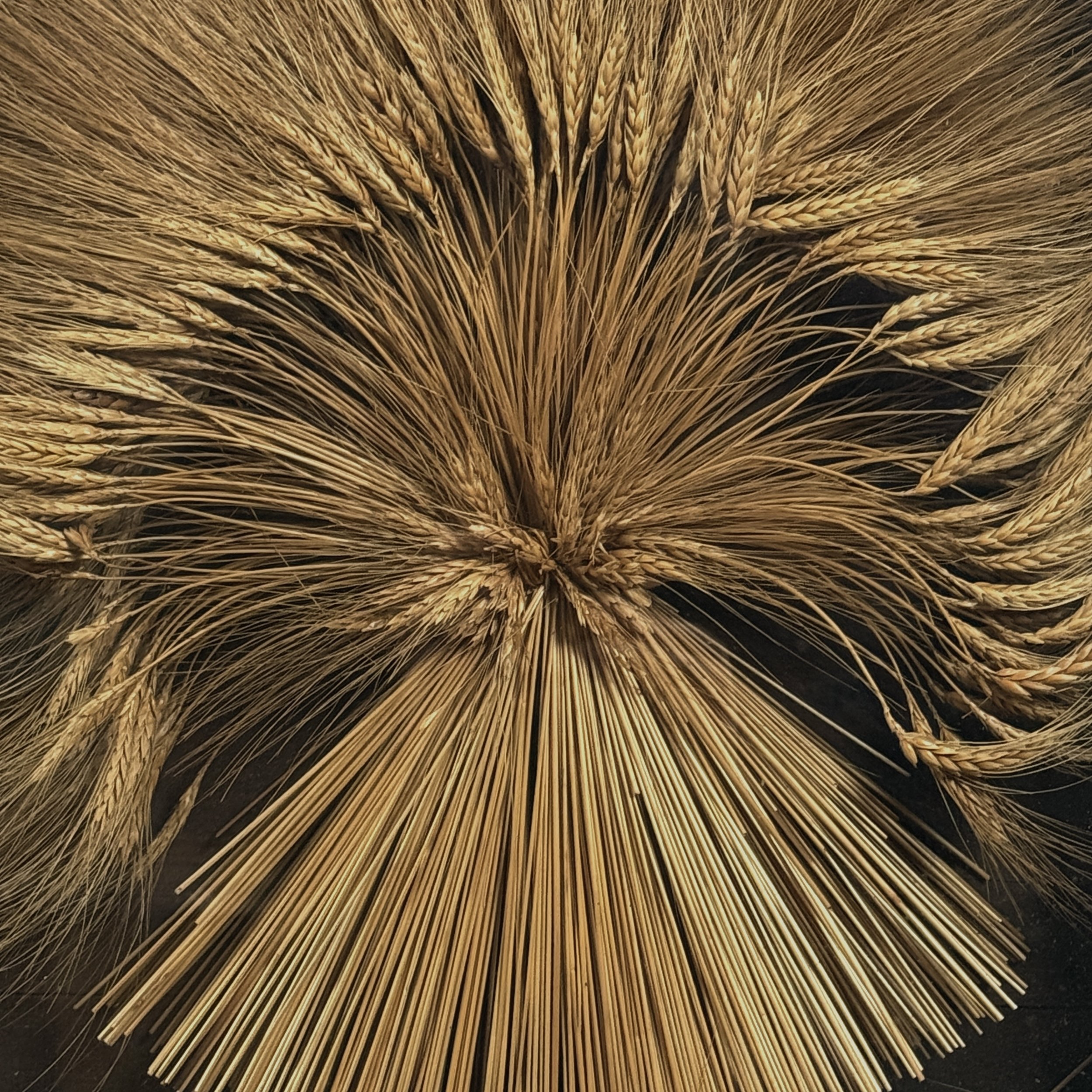 Image 4 of 9
Image 4 of 9

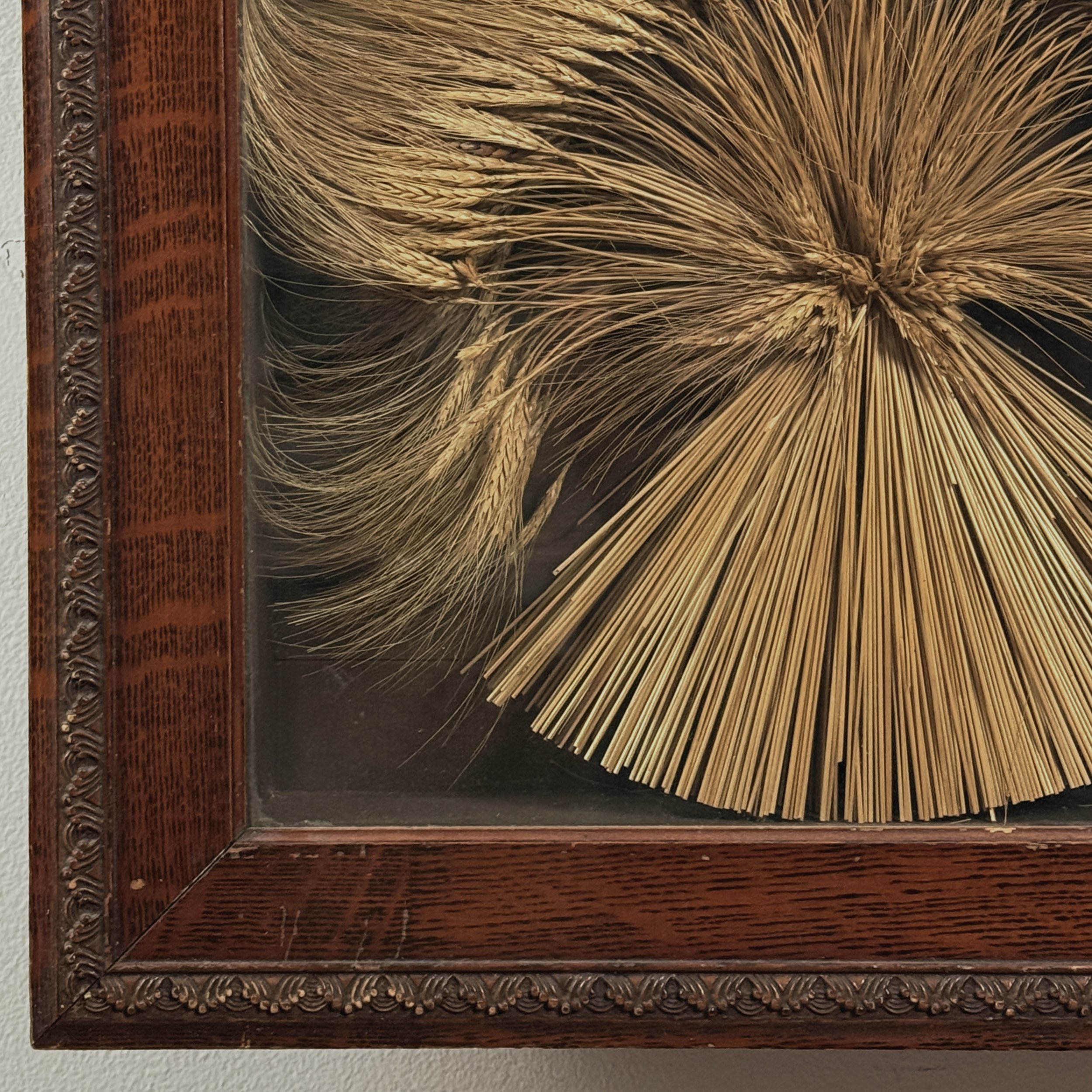 Image 5 of 9
Image 5 of 9

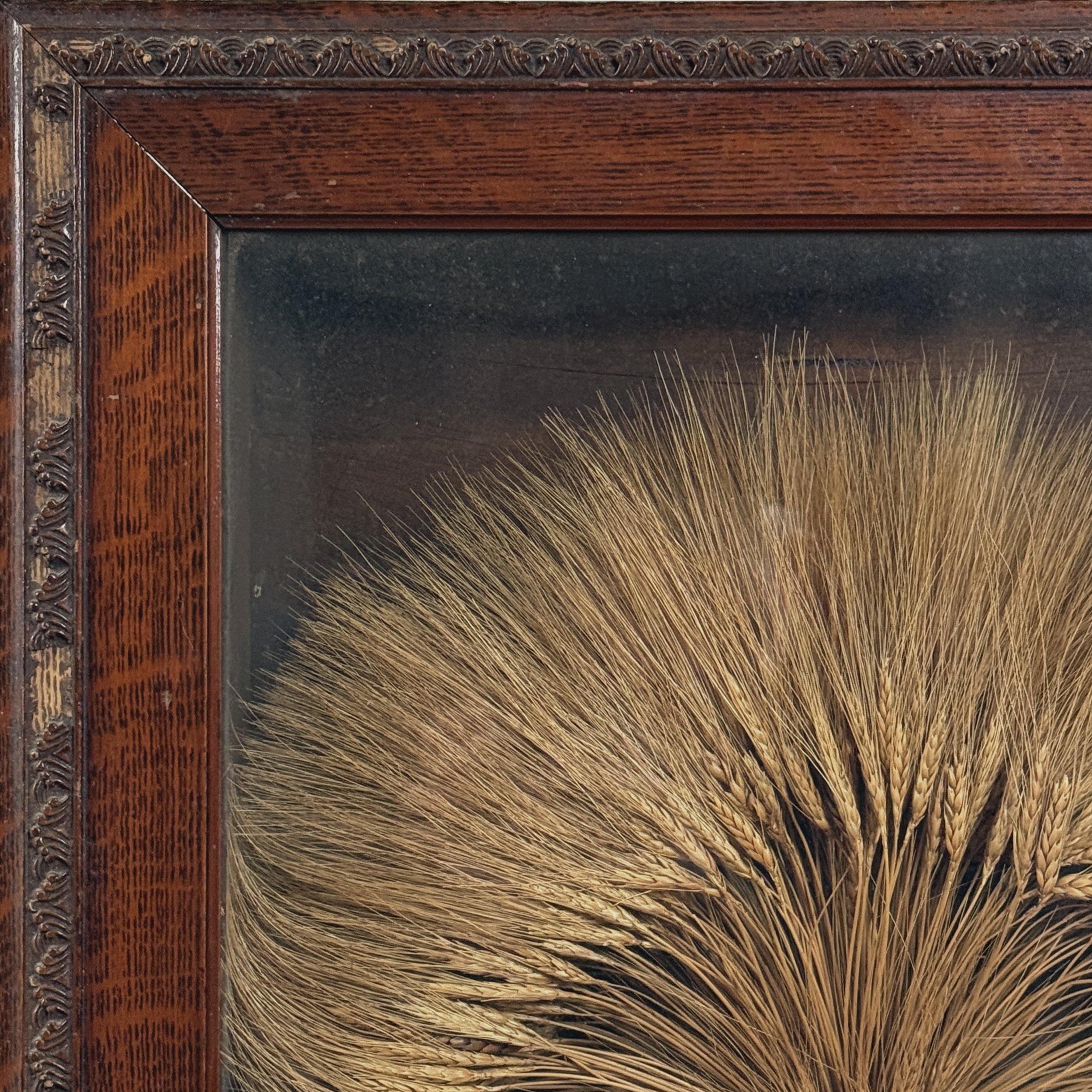 Image 6 of 9
Image 6 of 9

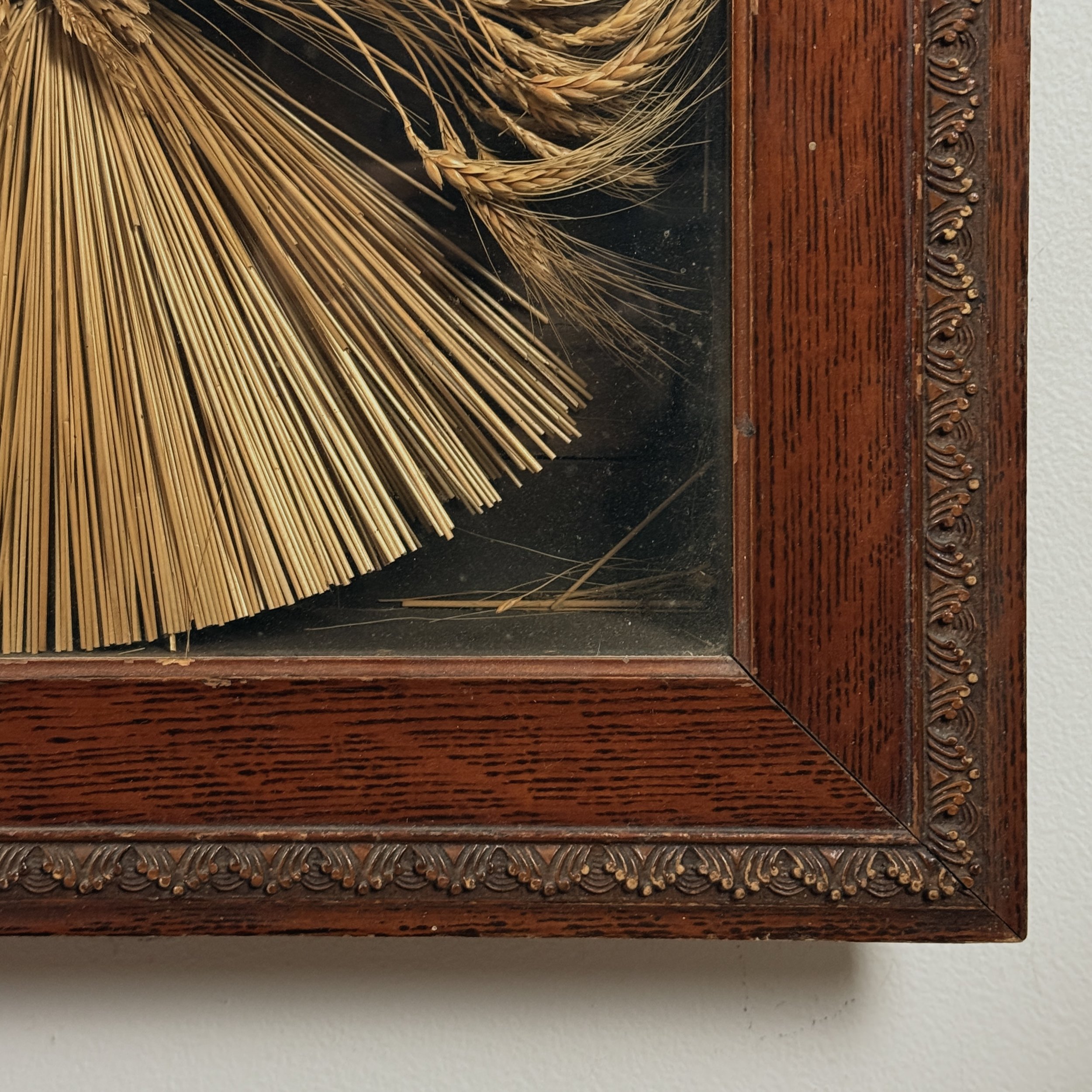 Image 7 of 9
Image 7 of 9

 Image 8 of 9
Image 8 of 9

 Image 9 of 9
Image 9 of 9










Antique Folk Art Mourning Wheat Shaft in Framed Shadowbox
Antique Folk Art Mourning Wheat Shaft in Framed Shadowbox
19th Century
Dimensions: 25.4” H × 21.4” W × 3.25” D
Description:
This poignant 19th-century mourning artifact features a fanned wheat shaft, traditionally used in funeral rites as a symbol of resurrection and the cycle of life. Wheat, long associated with harvest and renewal, was often incorporated into Victorian-era memorial practices, reflecting both grief and hope for eternal life. Wheat wreaths or bouquets were used before the advent of refrigeration which brought about the use of flowers. The shaft is preserved in a period shadowbox frame, its interior painted black to heighten the solemnity of the display. The original crown glass, with its subtle imperfections, lends an authentic, time-worn quality.
Condition & Details:
- Wheat Shaft: Structurally intact, with loose grains settled at the base of the shadowbox.
- Frame: Early wooden construction with a slat-back panel (allowing future access for conservation). Minor losses to decorative molding in the upper left corner.
- Glass: Antique crown glass with typical age-related waviness; no significant cracks or chips.
Historical Context:
Such wheat sheaves were common in rural American and European funerary customs, displayed atop coffins or graves as ephemeral tributes. This example’s preservation in a shadowbox suggests it was later repurposed as a memorial keepsake, bridging private grief and folk art tradition.
Provenance:
Likely United States or Western Europe, circa 1820–1880. A rare survivor of vernacular mourning practices, offering insight into pre-industrial expressions of loss and remembrance.
Conservation note: While stable, gentle handling is recommended due to fragile organic materials.
Antique Folk Art Mourning Wheat Shaft in Framed Shadowbox
19th Century
Dimensions: 25.4” H × 21.4” W × 3.25” D
Description:
This poignant 19th-century mourning artifact features a fanned wheat shaft, traditionally used in funeral rites as a symbol of resurrection and the cycle of life. Wheat, long associated with harvest and renewal, was often incorporated into Victorian-era memorial practices, reflecting both grief and hope for eternal life. Wheat wreaths or bouquets were used before the advent of refrigeration which brought about the use of flowers. The shaft is preserved in a period shadowbox frame, its interior painted black to heighten the solemnity of the display. The original crown glass, with its subtle imperfections, lends an authentic, time-worn quality.
Condition & Details:
- Wheat Shaft: Structurally intact, with loose grains settled at the base of the shadowbox.
- Frame: Early wooden construction with a slat-back panel (allowing future access for conservation). Minor losses to decorative molding in the upper left corner.
- Glass: Antique crown glass with typical age-related waviness; no significant cracks or chips.
Historical Context:
Such wheat sheaves were common in rural American and European funerary customs, displayed atop coffins or graves as ephemeral tributes. This example’s preservation in a shadowbox suggests it was later repurposed as a memorial keepsake, bridging private grief and folk art tradition.
Provenance:
Likely United States or Western Europe, circa 1820–1880. A rare survivor of vernacular mourning practices, offering insight into pre-industrial expressions of loss and remembrance.
Conservation note: While stable, gentle handling is recommended due to fragile organic materials.


